

c sj ca 2013 Sight & Sound 5.1 www.content-magazine.com Issue 5.1 sight & Sound Spring 2013 SIGHT & SOUND CONTENT featuring: Image Challenge 13_San Jose Fashion Oak Creek Vintage_Vintage retail Matthew Hamlet_Tattoo Artist Tony May_local artist Jerry King_Architect
SAN
INNOVATIVE & CREATIVE
content magazine, san jose sight & sound 5.1 $9.95
The Limousines Giovanni Giusti & Eric Victorino
JOSE’S
CULTURE
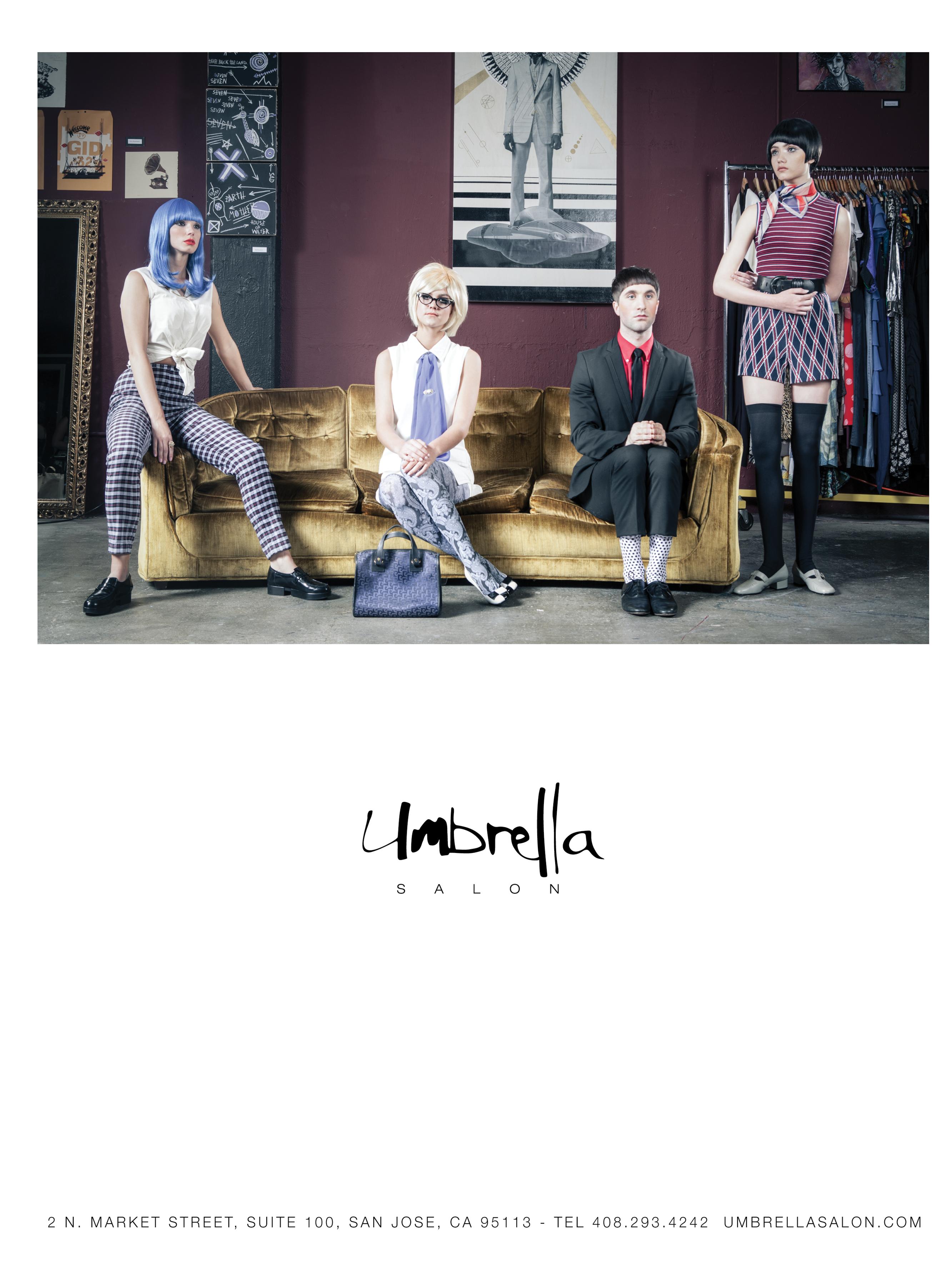

Sarah Garcia Marketeer
Sarah Hale Sustainer
Stacy Ernst Shaper/Blogger
Flora Moreno de Thompson Managing Editor
Gillian Claus Writer/Editor
Mark Haney
Contributing Writer
Kat Bell
Contributing Writer
Alyssa Byrkit
Publishing Consultant
CCONTENT
Issue 5.1 “Sight & Sound” Spring 2013
The Makers:
Jeff Gardner Designer
Sean Lopez Designer
Brian Jensen Designer
JP Costanzo Designer
Britt Clyde Proofreader
Kristine Young Design Intern
Jeremy Givens Photographer/Intern
Lynn Stock Contributing Writer/Editor
Daniel Garcia Cultivator
Sight & Sound features some of the visual and audio artists of our beloved community. We love being able to showcase the vast spectrum of talent, experience, and style happening in our area with you. From award-winning architecture to local musicians releasing an album with help of Kickstarter funding, this issue gives you a “sampler” of the sights and sounds of San Jose. We hope that discovering these people and their work will inspire you in your creative endeavors, as well as present you with some new people to know and follow.
We are also excited to announce our Content Magazine iPad app. This is a great supplement to our true love: Print.
Enjoy.
Daniel Garcia
IN THIS ISSUE
Tony May / Jerry King / Matthew Hamlet / Chad Hall / Chris Esparza / Oak Creek Vintage
To participate in Content Magazine: editor@content-magazine.com Subscription & Advertising information available by contacting sarahg@content-magazine.com

8 SJC to JFK
10 Downtown Design, Scott Knies 12 Architect, Jerry King 16 Graphic Design, Morgan Smail
18 Artist, Tony May
Master of Fine Arts, SJSU
28 Film, Design, & Start-Up, Mo Gorjestani
30 Scenes are Temporary, Movements are Forever
Shadowgraph Studios, Brandon van Auken 34 DRUM! Magazine, Phil Hood and Andy Doerschuk
38 Del Carlo Photography
Image Challenge 13
50 The Limousines
San Jose Sound
62 Poetry, Chad Hall
64 Oak Creek Vintage, John Nguyen
Humble Beginnings Tattoo Studio, Matthew Hamlet
68 Giant Creative, Chris Esparza
70 Mezcal, Adolfo Gomez
72 Poor House Bistro, Jay Meduri
74 Local’s Choice: Live Music Venues Eric Fanali
Contributors

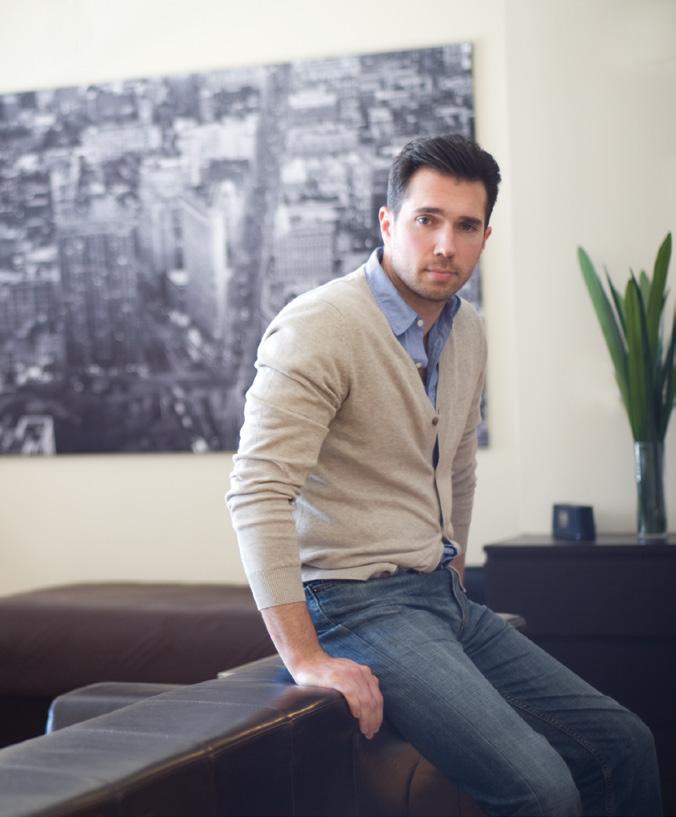


Non-stop
DESIGN
Art
Sight
24
32
42
SOUND
54
Writings
Profiles
66
Food
76
Content SIGHT & Sound 5.1 Content Magazine is a bi-monthly publication about the innovative and creative culture of San Jose. To participate in the production or distribution contact: editor@content-magazine.com
Jerry King, pg. 12
Mo Gorjestani, pg. 28
Morgan Smail, pg. 16
Image Challenge 13, pg. 42
Spring 2013 San Jose, California












be content san jose join subscribe www.content-magazine.com
Hop on a plane tomorrow and explore with reckless abandon or plan every last detail—whatever your mood, here’s our take on one of many non-stop destinations served by our very own Mineta San Jose International Airport. Now boarding!

Visiting New York City can be tricky. A short trip only allows for a taste of the city, and the quest to make every moment count can add a strong dose of pressure. There is a multitude of things to see, do, and eat in the Big Apple....
JWritten by Carolyn Bennett
You might as well start at the ultimate tried and true place to visit: Katz Delicatessen. This deli has been in the same spot since 1888, and still attracts locals and tourists alike to the Lower East Side. The long line is worth the wait. Once inside, skip the counter and head straight to a table (as Harry and Sally did). The must-try is a simple, juicy pastrami sandwich that’s big enough to feed two, especially if you’re getting sides.
Heading back uptown to check out a museum? Don’t just walk past Central Park—make it a destination. Designed by Calvert Vaux and Frederick Law Olmsted, the park’s 843 acres are home to a diversity of landscapes. There is a zoo, a castle, an old fort, a lake, an observatory, a carousel, an obelisk, and a public swimming pool. Sports fans can enjoy multiple baseball fields, two skating rinks, and tennis courts. Check out the park’s website for a calendar of events before you visit.
If you’re still wandering through Central Park on an early Friday or Saturday evening, be sure to go to the Metropolitan Museum of Art. Head straight to the roof, where the museum hosts an outdoor martini bar in the warmer months—a happy hour with a view that can’t easily be beat.
That’s enough of Manhattan for now: it’s time to hit the Brooklyn Bridge. This landmark is a sight in itself, and offers you a great chance to take in the skyline from across the East River. The wide pedestrian walkway above the car traffic makes it one of the nicest bridges to travel on foot.
Nonstop flights from SJC to New York depart daily and last approximately six hours. flight time
FK
Once you’ve landed in Brooklyn, you’re surely ready for some food, and there’s no need to travel far. If you’re just looking for a treat, head to the Brooklyn Ice Cream Factory. There are only eight flavors here, keeping the focus on the small batch production and the cream. You can take your cone and stroll around the Pier, or wander down Furman Street into Brooklyn Bridge Park.
If you’re ready to eat, choose from two options for great pizza: Grimaldi’s and Juliana’s. Let their long-standing pizza feud work to your advantage and pick the establishment with the shorter wait. If you’ve eaten too much to walk back, the Water Taxi is ready to take you across the river.
If you have time to head out of town, take the Long Island Expressway to the end of the road. You’ll find yourself on the North Fork of Long Island, a bucolic peninsula bordered by the bay to the south, and the Long Island Sound to the north. The North Fork has worked to retain the East End’s farming heritage and offers a beautiful combination of old architecture, beaches, rolling farmland, and an abundance of farm stands and wineries. This old world agrarian community made up of an interconnected series of small towns and hamlets will take you back in time.
If you’re gearing up for a day of wineries, start off with a stop at The Village Cheese Shop. You’ll find all the fixings you’ll need to pack a picnic or just snacks for the day. Be sure to try the Catapano goat cheese, too—a product made at a local dairy farm in Peconic.
While you’re still on Love Lane, don’t miss the Roanoke Vineyards tasting room. The wine is produced by two men that some consider the best on the East End, owner/grower Richard Piscano and winemaker Roman Roth. Make sure you get a tasting of Gabby’s Cabernet Franc; this signature Long Island grape is exemplified in each vintage.
Farther afield, rent a bike in Greenport and head east on Main Road (Rte. 25) to Orient Beach State Park for an idyllic ride. Take a detour into the small village of Orient, past Oysterponds Farm for berries if you’re lucky enough to visit in the summer, and onto the lighthouse. Once back in Greenport, end your adventure at The Frisky Oyster with a cocktail and a dozen of Pipe’s Cove oysters.
Flights to New York depart daily from SJC. What are you waiting for? Plan your next trip, pack your bags, and share your travel adventures out of SJC with us: @contentmag.
FK Katz Delicatessen 205 E. Houston St. New York, NY 10002 212.254.2246 katzsdelicatessen.com J 1000 Fifth Ave. New York, NY 10028 212.535.7710 metmuseum.org The Metropolitan Museum of Art Old Fulton @ Water St Brooklyn, New York 11201 718.246.3963 brooklynicecreamfactory.com Brooklyn Ice Cream Factory 33705 North Rd. Peconic, NY 11958 631.765.8042 catapanodairyfarm.com Counterpoint Catapano’s Dairy Farm 1 Front St. Brooklyn, NY 11201 718.858.4300 grimaldisnyc.com Grimaldi’s new York Central Park centralparknyc.org 105 Love Lane Bridge Mattituck, NY 11952 631.298.8556 thevillagecheeseshop.com Counterpoint The Village Cheese Shop Pier 1 - Brooklyn Bridge Park, DUMBO nywatertaxi.com Counterpoint New York Water Taxi
The Downtown Design Committee
THE DOWNTOWN DESIGN COMMITTEE REWARDS GREAT ARCHITECTURE AND DESIGN IN SAN JOSE, WHILE DEMANDING MORE FROM FUTURE DEVELOPMENTS.
Urban. Design. San Jose. These words may seem foreign to many who live in a city known more for its suburbs, freeways, and farming history than for its downtown core. But in a small back room of the Santa Clara Valley Chapter American Institute of Architects office, a group of creative, like-minded individuals sit for an hour every month to discuss urban design in downtown San Jose.
The Downtown Design Committee is made up of local architects, San Jose Downtown Association board members, and other creative non-architects like Leah Toeniskoetter of SPUR San Jose. The agenda ranges from discussions on finished new construction, restored historic buildings, and projects still in the design review stage.
What first started as the Urban Design Review Board, a city entity, has evolved into a committee of the San Jose Downtown Association headed by two men, Scott Knies and Kent Mather. Knies recalls how
the current committee formed in 2008. “I told Kent that if we were going to do it, we were going to need architects.” Mather, being the former president and executive director of the local AIA chapter, had the connections to get architects involved. Soon after, the committee was formed.
Knies, executive director of the San Jose Downtown Association, asked Mathers to chair the new committee. “He wanted to upgrade the work and focus of the committee to support good design of any type in the downtown area.” They ended up creating a three-tiered award system to honor excellent design in downtown San Jose.
The DDC’s highest honor is the Jim Fox Golden Nail Award, given to the highest level of design achievement in San Jose. It has only been awarded twice since its inception in 2009. That year, it was handed out for the restoration work done on the Wilcox Block Buildings. In 2011,
design 10
“DOWNTOWN IS WORTH IT. MORE ATTENTION NEEDS TO BE PAID TO THE ARCHITECTURE.”
the Marriott Hotel received the award for its design. The award was named after the late developer Jim Fox, known for his high caliber design detail and mastery of restoration work on historic buildings such as the Sainte Claire Hotel.
The process for nominating and deciding award winners is a very deliberate one. The committee assigns sections of downtown to different architects to survey the buildings and look for elements of good design. The committee comes together and members present design elements they think are worthy of awards. The committee then tours the specific sites up for consideration and votes on which projects should receive awards.
Knies sees these awards as a representation of the DDC’s commitment to recognizing and rewarding good design in downtown. “Downtown is worth it. More attention needs to be paid to the architecture. We need to value it and appreciate it more. That means by recognizing good work. It also means demanding more in the work that [is yet] to be done.”
But the balance between criticism and betterment of design is difficult. “What I found in our meetings is that the committee is really respectful of other architects. They loathe to actually criticize. It is more about ‘What about if we try this?’”
It is conversations like these that have been ongoing within the committee over the newest development project in downtown San Jose at 1 South Market. Up until 1 South Market, downtown projects were dealt with strictly through the City Planning Division, which included the Architectural Review Board.
But with the disbanding of the Redevelopment Agency and a recovering economy, interest in improving downtown San Jose has not solely been by those financially and professionally invested.
Citizen groups, non-profits, and even individuals have made their voices heard in the demand for better design downtown. Mather sees the vigor for design in downtown as a collaborative process. “The DDC is not trying to do this all alone. We feel that working with other entities that have a similar desire and purpose is the way to make it happen.”

Mather sees the DDC’s involvement with 1 South Market as being unprecedented. “This is really the first time that we have gotten involved in a design review for a downtown project.” On this project alone, DDC members have sat on the city design review board, have had open discussions with city planner Joe Horwedel, and have even sat down with the developer and his architects.
Because of community interaction in projects such as 1 South Market, the once rigid development process has become a more organic one. Knies sees the changes firsthand. “We’re interfacing more with the processes that are left at the city, and folks are expressing more interest in how the buildings look, and how they react to the public areas.”
Knies sees the city’s accessibility as one of its greatest strengths, which the budding design community can access to continue promoting good urban design. “There’s an accessibility and openness, where there isn’t old money, or [it isn’t] closed off to someone showing up in a Sharks jersey,” Knies says. “If you want to make a difference in San Jose, you can.”
Twitter: @sj_downtown Facebook: sjdowntown sjdowntown.com
11
Scott Knies
KING IS EVERY WHERE

If you are traveling South on 101 near the Tully exit, he is there. If you are downtown walking through Paseo de San Antonio, or on the Westside where Hamilton and Campbell split, or even if you’re just stopping at 7-11 on North First and Gish for a Slurpee—he is there, too.
Though you might not spot him in a crowd or know his work on sight, his peers have recognized his influence on our region and made King a Fellow of the American Institute of Architects. He received the honor as a pioneering architect of Silicon Valley and was awarded the Birge Clark Award in 2012. King’s Gish Family Apartments was named one of the AIA/COTE’s 2009 Top Ten Green Projects.
It is not honors or awards that drive Jerry King. Rather it is a love for design and the challenge of developing structures that engage both occupants and the environment. So much so that King confesses, “I would pay people to let me do what they pay me to do.”
Work, Inspiration, and Design Philosophy
To me buildings are kinetic, dynamic, and they take on their surroundings. Every one of my buildings is different because of the context. I think that any average person that doesn’t know anything about architecture should be able to look at a building, and see the problem and the solution simultaneously—that’s a good piece of architecture.
HWY 101--The Fairway
It’s a freeway. Nude Descending A Staircase? You know that Marcel Duchamp? It shows motion. It needed to be—as Lydia Lee said in her an article in Metropolis Magazine—“The Shield.” It’s a sound wall, but it needed to be sculptural. It needed to reflect the activity that was next to it—this island in the flow of the freeway at high-speed. It was a linear project so it was basically about motion. And, off of that wall, come these blocks of courtyards that look into the mountains so that views are created. We came up with this very artistic sort of piece of urban art on a freeway and it actually models itself in the light beautifully. The fact that “The Shield” is metal makes a protective coating that keeps it from the elements of the freeway and creates a sonic shield.
First Street and Gish
This one took on the materiality of the light rail system—they are industrial designs. So the coating of the building, the skin, became an industrial gesture towards the materials of the light rail trains, being metal and bidirectional because it flares back and forth in both directions. The flares take on sort of a natural element. They get kind of that break [in the] roofline so it becomes more of an object than a sawed-off two-story building. It’s an amputee, so this helps to solve that. It’s actually is a flat roof with photovoltaics, but at least those planes gives it some “wings.”
12
Interview and Photography by Daniel Garcia

“YOU CAN’T SUPERIMPOSE GOOD DESIGN ON A COMMUNITY OR SOCIETY THAT DOESN’T WANT OR UNDERSTAND IT.”
Gravity
The thing that most of my buildings have in common is their sensibility to the often over-looked design factor that is gravity. Buildings and people are very subject to gravity and that should be reflected in the materiality of the building. For example, there is a thing called physiognomy—a psychological connotation of materials—like English leather riding boots have a sense of elegance, and a tennis racquet has a sense of vitality. Objects have certain meanings. So concrete as a substitute for stone was invented by the Romans, and it has a very natural gravitational feel to it—it’s an anchor. So in all my buildings, instead of plastering over the concrete— most of them have the parking structures on their base—I express the concrete as a noble material that anchors the building to the ground, and has a sense of being at rest. Then comes the metal, the lighter element. And then, on the top, are the trellises. They are the lofty material—an expression of materials in terms of the human sensitivity—in other words having a building relate to people. They get it. There is something about it they like because it is anchored to the ground. It has a midsection that is a protective coating and the upward blade is like a winged hang glider that wants to take off. It has to be pulled down at these angled struts that are actually compression but look like tension there to keeping the blade from taking off. There is something that is uplifting about that—no pun intended. I want my buildings to have a unique sense of place to them and ultimately that the materiality relates to the human sensibility.
Influences
I was heavily influenced by the Scandinavian designers of the 70s when I was sort of a longhaired hippie. Their approach to design really was the thing that influenced all of my work—every part. They are the classics, Alvar Aalto, the Aalto furniture and the Aalto buildings. He’s from Finland—very much a naturalist architect or organic, I guess you could call it.
A building is not drawing or a sculpture, it is a structure. I think that the marriage of structure and architecture has been developed almost to the point of perfection by Santiago Calatrava. He is the purest holistic architect and engineer on the planet. I just love that whole approach to design. They don’t separate architecture from domestic design—from glassware, silverware, flatware, fabric design, or graphics.



14
Hamilton Ave and Campbell Ave
Gish and North First
Kiosk, Paseo de San Antonio
“I EXPRESS THE CONCRETE AS A NOBLE MATERIAL THAT ANCHORS THE BUILDING TO THE GROUND, AND HAS A SENSE OF BEING AT REST.”
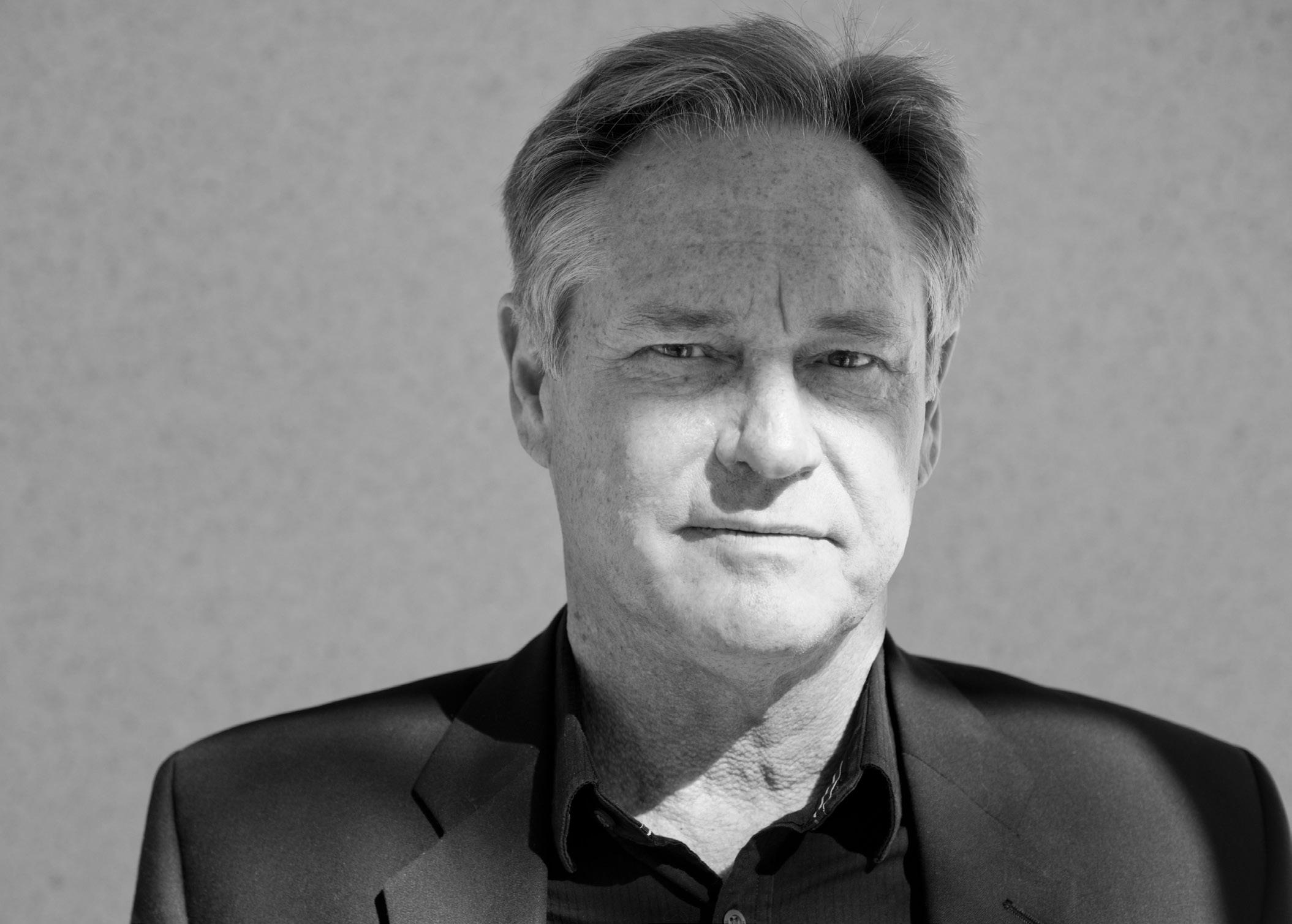
I think when you come from a background of building with your hands and building models, there kind of is a Zen mantra of the real building that takes place. Every one of my award-winning buildings has had a model built of them. They allow me to visualize every friggin’ inch of that building, inside and out. I know what I am dealing with. I start making decisions about how things are going to go together, about every detail. If you don’t build it with your hands, and have the experience of doing that, I think you’re losing an important part of what I consider an essential relationship between the building and the person and the occupant. Because there are subtleties of reality that just don’t show up in virtual space.
to it than just what is on a screen—the physiognomy of materials, the way light hits different materials, the atmospheric, influence on architecture. Lighting and its relationship to the sun and the sun’s rotation. A lot gets lost.
The good news is that the computer has the ability to expand visualization forms especially in some of the more sophisticated graphic programs and modeling programs. It’s a wonderful tool, but the computer is not an end itself. A drawing is not a building. A model is not a building. A building is a building. Everything else is leading up to that. I think my buildings are better than my models and my drawings—I don’t think every architect can say that.
Using Technology
Part of the bad news is that the young interns think that architecture lies somewhere within this computer. As if it can be discovered within the computer. They’re losing their connection to the site. Losing their sensitivity to the special reality because of virtual reality, and there is more
OJK
Architecture and Planning
Jerome King, FAIA Principal ojkarch.com
15
GUIDED BY INSTINCT
MORGAN SMAIL
Morgan Smail’s minimalist approach to design and branding isn’t about aesthetics—it’s his philosophy. Thriving on instinct, he states that the best process may be the absence of one.
 Written
Written
“TO ME, THERE’S VERY GOOD BRANDING AND ADVERTISING CAMPAIGNS OUT THERE THAT DO A GREAT JOB OF CONVINCING PEOPLE THEY NEED THINGS THAT THEY REALLY DON’T, BUT AT THE END OF THE DAY, WHAT IS THAT REALLY WORTH?”
by Brandon Roos
Photography by daniel Garcia
design 16
Born and raised in San Jose, Smail grew up on the city’s north side—off Berryessa Road. He attended Archbishop Mitty High School and, after a stint at De Anza College, graduated from San Jose State with a degree in Art and Design. Though settling on a major can be tough, Smail knew graphic design was his calling as soon as he was presented with the option.
Smail loved drawing logos as a child. “I was always attracted to identity for some reason,” he says. “If there was a sponsor section, I would just sit there and look at all the logos on the sponsor spread. Who gets excited about corporate identity as a little kid?” A sneaker fan, he would draw his own Nike shoes, and his affinity for skateboarding led him to create a Powell Peralta storybook in the fourth grade. Though he admits he wasn’t the best student, it was a proud achievement for the young designer-in-training.
D1Me, which cast modern hip-hop and soul icons in a timeless light. These successful projects led to an ongoing partnership with San Jose Jazz, and he continues to hone their visual brand (including their most recent Summer Fest and Winter Fest poster designs).
As a self-labelled minimalist, Smail admits that he does collect “Think Different” Apple campaign posters. A handful are proudly displayed on his walls, with the rest hidden away. The late Steve Jobs remains a key inspiration. “I felt like he understood so much of what I believe in,” Smail says. “He was out to birth something that he had a real vision for—that really brought value.” This last point resonates strongly with Smail, who tends to take issue


In 2010, he was brought on at Liquid Agency as a designer, bringing insights in concept development and ideation. He has since left to pursue design as a consultant— he thrives on the one-on-one client partnerships. It was during this time that he created his favorite campaign: “Further Faster” with NetApp. He helped conceive NetApp’s “n” logo as a window into a different world. “Let’s use it to show what NetApp can do, and the difference between NetApp and not having NetApp,” he recalls saying. This led to a series of juxtapositions—sky and space, freeway and computer chip, planted seeds and growing crops, all of which highlight that distinction. He also remains fond of his poster designs for a monthly party called
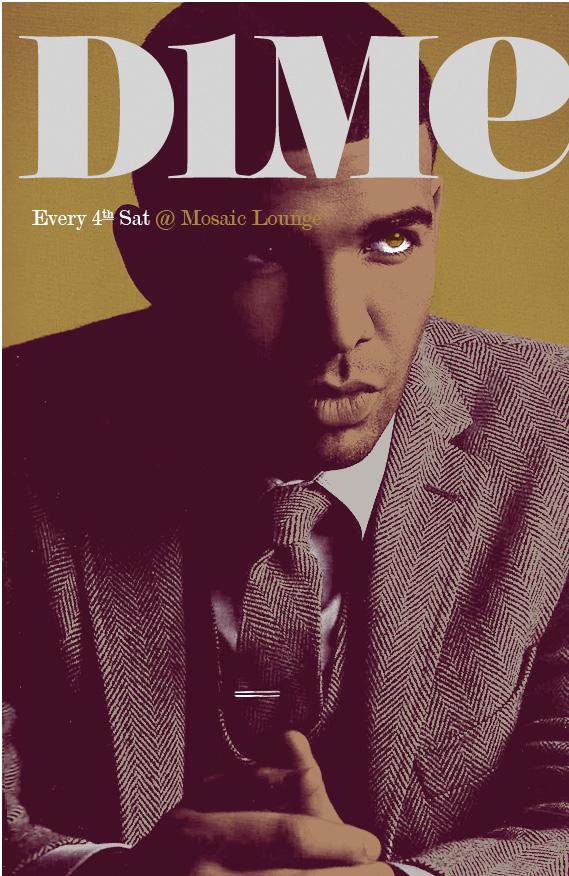

just over populating or polluting it with more junk because you want to make some money. To me, there’s very good branding and advertising campaigns out there that do a great job of convincing people that they need things they really don’t. But at the end of the day, what is that really worth?”
As a designer of strong conviction, he tends to be an outsider.
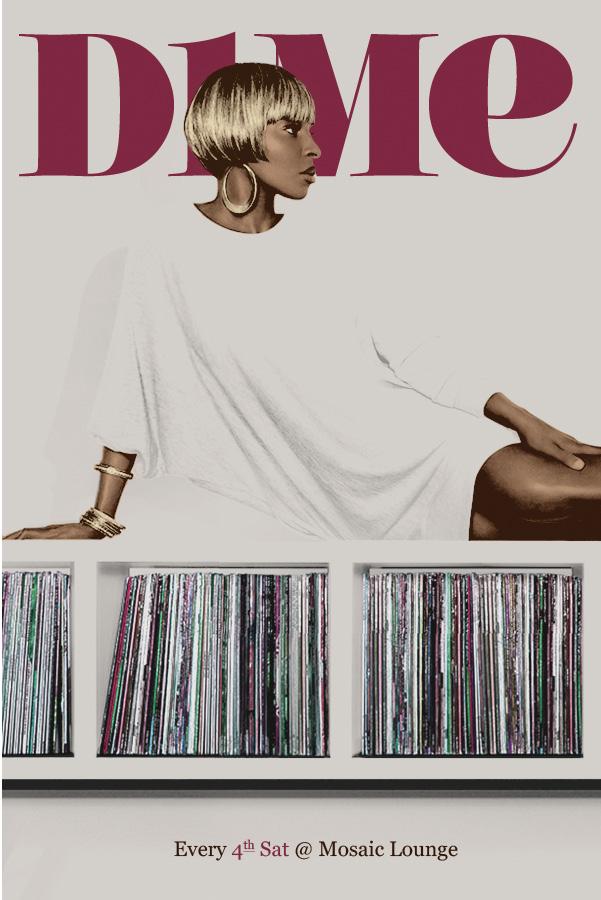

with companies looking to hawk a product for profit rather than its inherent value.
“At the end of the day, it’s not about branding,” he says. “It’s really about bringing products to the world that we live in. [Products] that the world really needs, not
“I’ve always had a hard time fitting in anywhere I go,” he says, pointing out that’s part of why he gravitates toward the “Think Different” campaign. “I’m very, very idealistic.”
Smail thrives on instinct and restraint, finding both to be key life precepts that guide his work. “I think instinct drives everything I come up with. I just use my intellect to fit it together,” he says.
He’s currently editing his first music video. A short film set to Jay Denes’ “Heroin Chic,” Smail describes it as a “spiritual drama.”
As for why he chooses to stay in San Jose, where his field can be quite compacted, he admits proximity and weather help. Ultimately, it is because he’s near those he’d most like to assist: entrepreneurs. Embedded in a community that still embraces the upstart spirit, he enjoys partnering with those who seek a positive change.
“I help people say things, but it doesn’t matter if there’s not anything to say,” he claims. “That’s what actually drives me— when there’s something valuable to say.”
Twitter: @MorganSmail morgansmail.com
17
Tony May: infinite variability
I often feel that the world is a big and complicated place that we can’t really do much about on the larger scale. If we can just oil a door hinge that is squeaking, I’m satisfied.
Ioftenfeelthattheworldisabigandcomplicatedplacethatwecan’treallydomuch aboutonthelargerscale.Ifwecanjustoiladoorhingethatissqueaking,I’msatisfied.
Tony May’s 1920s downtown home is peaceful, with dried leaves hanging from strings, handcrafted cupboards displaying his and others’ work, and the soft hum of water boiling for a cup of tea. There is the normal collection of items that gather after living in a place for nearly forty years. But this house contains treasures a vintage enthusiast would love. An old paper cutter, a drafting table, an antique metal floor lamp—it’s almost a hipster paradise. There is coziness that draws you back to a simpler time. A time before electronics and the digital this or that, back to the days of craftsmanship, machinery, and the solidness of pulleys, wire, and string.
It is a home. It is a workshop. It is where Tony May lives and creates.
18
Interview and Photography by Daniel Garcia
art
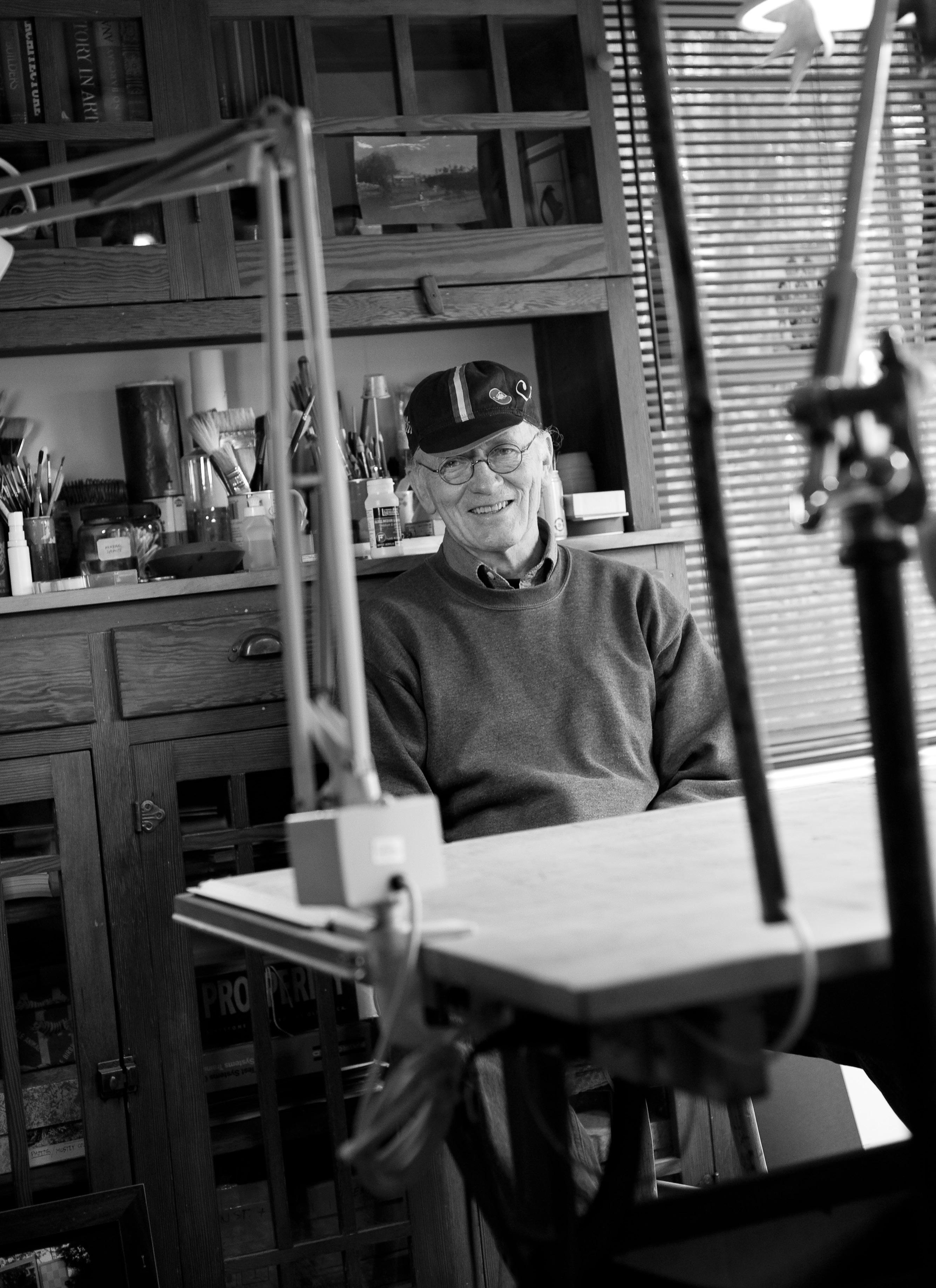
THE MATERIALS
You work with a variety of materials. Do you have a favorite?
Wood is my preferred medium, so I think of myself as more of a carpenter than anything else. I studied painting in college, and I had about three or four years of ceramics.
I left ceramics when the teacher finally gave me a B. I just had automatic A’s [up to then]. My professor finally gave me a B and said, “You’re not really into this, are you?” That’s when I started making those sculpture-like things that were made out of the materials used in stretching canvas. I started doing those because I was getting so tired of making these really big, heavy, ceramic pieces that I couldn’t get rid of. [laughs]
So was it necessary, or were you looking for a new medium?
Written by Richard Vo
Photography by Chris Lovos
Creative Direction by Geoffrey Nguyen
A little of both. I was lacking inspiration, trying to come up with interesting new forms in ceramics. I was struggling with making abstract things that had some scale to them, but I wasn’t yet skilled at making really big things. Plus, the kiln facilities were not huge, so I made a few pieces that were supposed to be large, but they were made of individual components and needed to be assembled after firing. You end up gluing pieces together with epoxies and making this crazy, monstrous thing.
When you’re moving from apartment to apartment, you’re lugging all these things around. The joke was, how many different stairways did I end up jettisoning ceramic pieces down in my career of moving two or three times in college?
That’s how the desire to make things that were more portable emerged. Then, it seemed like I was moving every year. Yet since 1973, I have stayed put in this house.
THE WORK
Your work has a nostalgic aspect to it. Where does that come from?
I’m enamored of 19th century technology. I always felt that my own skill level advanced pretty much up to then; it reached a plateau and never quite advanced beyond that.
Minimal art became very popular when I was in school. There were a lot of influences coming from that sort of thing, but I was focusing on sculpture. I like to think I was making something that would be like a John Chamberlain, because that’s what sculpture was by a certain definition at one time. But mine would be light and portable and variable. It wouldn’t be just one shape of abstract. It would be like this piece of cloth, but you could push it into all these different shapes. And then theoretically, you could get all kinds of emotive responses from it.
I was trying to make devices that would allow for this infinite variability, which, of course, they never achieved. But they were headed in that direction. It’s interesting, because now so much of what is being done in the virtual world and with computers is [about] not being satisfied with one image, but only with the kinetic, constantly varied image.
At a certain point with any of those kinetic pieces, as soon as you have that feeling of, “I think this is where we came in,” they’re no longer of interest—they’ve exhausted their possibilities of being interesting because of their variation. You’re inevitably returned back to the need to just produce a singular, static image that has that potential for expansion mentally, even though it’s not physically changing. I still think there’s room in the world for that kind of art. It doesn’t all have to be moving and blinking.
I was very influenced by performance art when I was in school. Steve French had this class in Madison that was focused on installation and performance. We did a bunch of performances that involved manipulating the audience. You know, taking the audience and almost abusing them. [laughs] Locking them up or something. Putting them in a position where they were ordered to do something—“OK, now you guys are going to do this.”
Then...making these structures, where instead of me deciding what the expressive object would look like, I would have a device that would allow the audience to make their own.
I sort of hate that whole thing. [laughs] I hate it when I go to some gallery and they say, “Hey, here’s a bunch of cool things. Why don’t you guys start making your own art with these?”
Bullshit! [laughs] I’m tired of that. I’m back to where I want the artist to actually make the art.
20


21



How do you think your work was affected by being a professor?
Well, it was reduced in quantity, because I didn’t have enough time to do it. On the other hand, I seem to have had just the perfect amount of time. I had all of the time that I couldn’t be doing it to be thinking about doing it. Some jobs get in the way of your production, but they help in a way, by forcing you to filter out the stuff that you probably never needed to do. The stuff that you really want to do rises to the top of your list.
In my personal work, I started fixing things in this house. I developed what seems to be a house fixation...or a house-fixing fixation. [laughs] I got so involved in fixing it up, and then doing odd things to it, then documenting those with paintings. It felt like this was a bonanza—I can do these obsessivecompulsive activities and then I can document them with obsessive-compulsive paintings!
A lot of my own art-making tendencies were directed into working collectively with students. I did a stint where I was doing temporary installation things with them. We made so many. Those vanished rather quickly after we finished them.
When I was doing group stuff, we worked democratically. I did have some rules. They were not allowed to do something I was convinced was going to get me in jail, for one thing. Or be seen as a negative contribution to the community. I think a lot of contemporary art does take that approach. Like, “Well, the world is really screwed up, so let’s screw it up some more to dramatize how screwed up it is.” I never thought that worked.
I suppose I realized that when I began to feel more secure in my profession, and to feel that being an art teacher wasn’t a total drag on society. [laughs] That there actually was some social benefit in working with students, and trying to get students to realize that they could accomplish quite a bit with very little means, just by employing their brains and their technical skills.
I often feel that the world is a big and complicated place that we can’t really do much about on the larger scale. If we can just oil a door hinge that is squeaking, I’m satisfied. A tiny little thing that you have mastered and you have under control. That seems to be somewhat satisfying, at least for a time.
I don’t think I ever thought that my work was going to change the world. I became aware of the fact that I could have some influence of a positive nature in my immediate community. By paying more attention to see if I can, as an artist, be a way of making a community better.
THE FUTURE
“I DON’T THINK I EVER THOUGHT THAT MY WORK WAS GOING TO CHANGE THE WORLD, BUT I BECAME SOMEWHAT AWARE THAT I COULD HAVE SOME INFLUENCE OF A POSITIVE NATURE IN MY IMMEDIATE COMMUNITY.”
Is there something that you always want to do with your work, and you feel like you never are able to do it, and that keeps you going to the next project?
I have in my head a lot of projects I’m pretty sure I will never finish in my lifetime. I don’t know if I need to, but they’re there as goals. I will never run out of things that I want to do, which I feel very fortunate about. I guess my biggest fear is that I will run out of the energy I need to do them.
I spent years having forgotten I was raised on a farm in Wisconsin; that somehow it was all behind me, and it was no longer part of who I was. It’s like I’d outgrown it, I’d evolved. When I was in college, I thought I had definitely evolved, and I was now part of the cutting edge of the avant garde. And my parents were these local yokels that were completely unconnected to art in any way, and very unsophisticated.
In the last decade or so, I feel more than ever like this Midwestern farmer. It’s ironic, because I wanted nothing more than to get away from that place when I was a kid. I find that so much of that upbringing is still deeply ingrained in there; that self-sufficiency, making do, and not having extravagant amounts of anything. I’ve come full circle.
tonymay.net
23

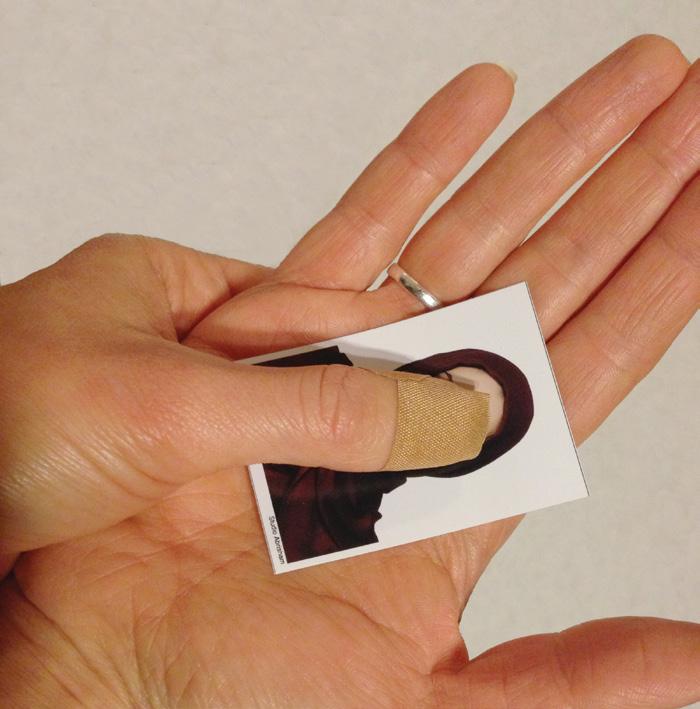

 Ara Ahadi
Ara Ahadi
art
Armine Sargsyan
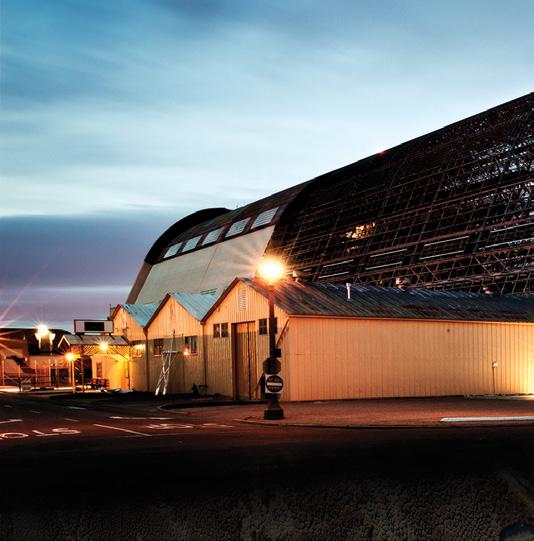


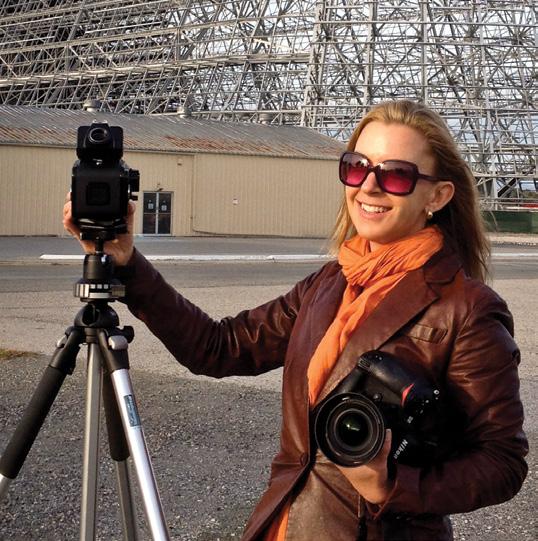
 Written by Christy Junkerman and Sieglinde Van Damme
Written by Christy Junkerman and Sieglinde Van Damme

Years of Excellence


The
Department of Art and Art History at San José State University
celebrates a century of innovation in art education.
The 2013 academic year rolls to an end, and the Master of Fine Arts (MFA) candidates at San Jose State University are busily preparing for a showcase of their work at the Art Ark Gallery. Representing the disciplines of pictorial, spatial, photography and digital media, the “Lift-Off” exhibition will give audiences a rare insight into the technical and visual research each artist diligently pursued over the previous three years. This year’s graduates are the newest in the art department’s illustrious century-old program; a series of centennial exhibits this fall will celebrate the work of alumni.
Throughout its one hundred year history, the Art Department at SJSU has kept
an important presence in the cultural and economic life of the South Bay, as it transitioned from the “Valley of Heart’s Delight” to Silicon Valley, and as the campus itself evolved from normal school to state college, and eventually state university.
The Department originated as a two-year program to train prospective teachers in studio art and art history. Students were prepared to fill positions in area schools as the Valley grew and the need for universal public education was recognized. At the beginning of the 20th century, education reformers considered art to be a crucial part of anyone’s education, and nearly half of the school’s student population at the time took part in studio art and art history courses.
From its earliest days, the Art Department embraced a spirit of collaboration, as well as a consistent engagement with the wider community. Students and faculty labored on displays that were sent to the great International Exhibitions, a popular part of the commercial, social, and cultural life of the rapidly developing West Coast. In 1909, Calthea Vivian, a painter who would later become the head of the department,
Elena J. Polanco
Barbara Boissevain
25
Esteban Salazar



worked with students to research, design, and paint a painstakingly accurate wooden reconstruction of the famous temple of the Parthenon in Athens. The scale model was built by students in the Manual Training Department, mounted on a pedestal, and sent to the AlaskaYukon-Pacific Exposition in Seattle, where it was honored with a gold medal. In 1915, a similar project resulted in a model nursery room sent to the Panama Pacific International Exposition in San Francisco, highlighting a commitment to “the modern application of art principles to everyday living.”
Throughout the 1920s and 1930s, the Art Department grew in size and sophistication. After WWII, new facilities and programs were added, including graphic design, industrial design, animation and illustration. The Department houses one of the oldest glass programs in the country, and remains a major influence on materialfocused art practice with its top-notch foundry, woodshop, ceramics and glass studios. More recently, contemporary digital technologies were added. SJSU and the CADRE Laboratory were Visionary Partners along with the City of San Jose and Adobe in the launch of the first ZERO1 Biennial in 2006.
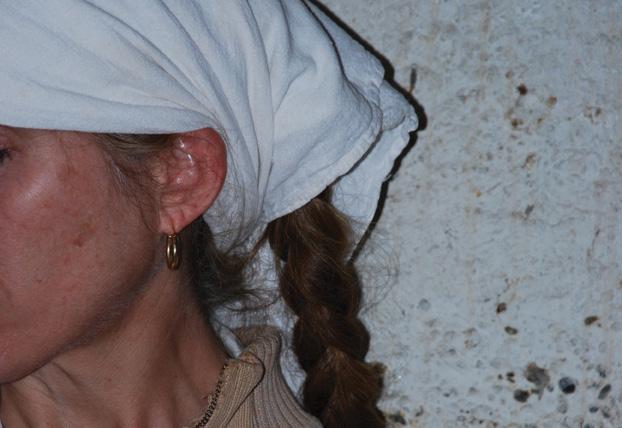




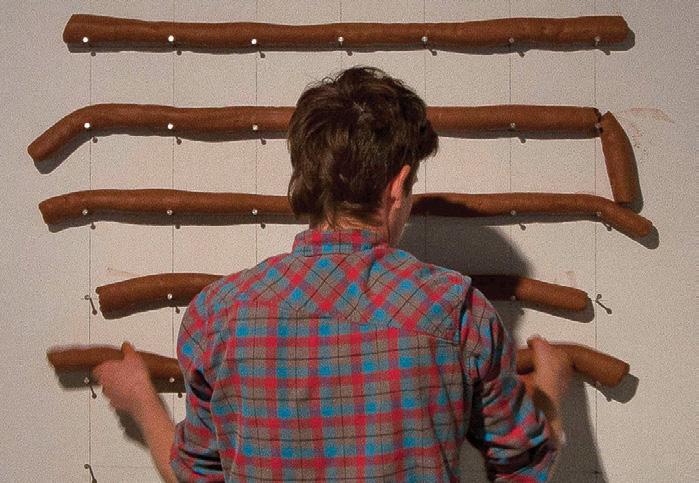
Over the years, faculty has included wellknown artists such as sculptors Fletcher Benton and John Battenberg, the textile artist Consuelo Jimenez-Underwood, the painter-sculptor Sam Richardson and the painters Harry Powers and Rupert Garcia. Among the many artists with influential careers who studied at San Jose State are Wayne Thiebaud, Jay Defeo, Robert Graham, Mel Ramos, Mark Tansey, and more recently, Tim Hawkinson and Binh Danh.
Students in the San Jose State MFA program deepen their practice through a rigorous curriculum of studio work, intellectual research, art history and contemporary critical theory, as well as writing and public speaking. They also have opportunities to gain practical teaching experience. Beyond all this, however, the challenge of making and exhibiting art requires consistent creative problem-solving and resourcefulness.
As one of this year’s MFA candidates observes, “The skills we develop become so second nature that they expand outward from our artistic practice to help us address non-art challenges with equal confidence.”


 Jennifer Groft
Jonathan Huang
Gloria Huet
KGM
David Kempken
Meiru Huang
Jennifer Groft
Jonathan Huang
Gloria Huet
KGM
David Kempken
Meiru Huang
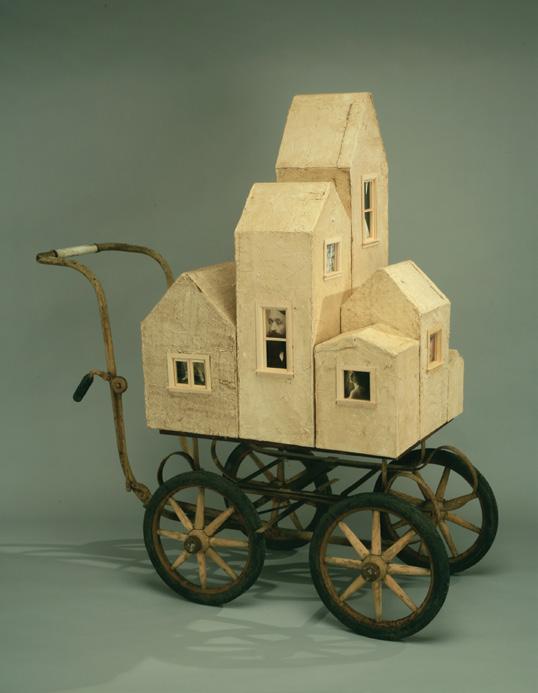

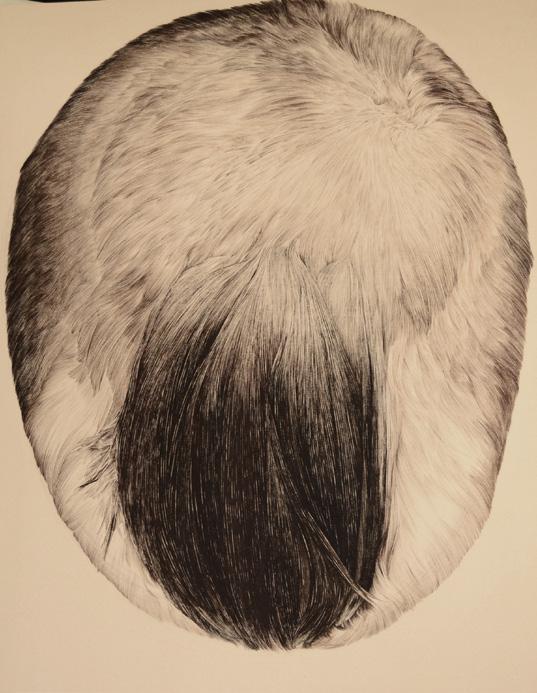

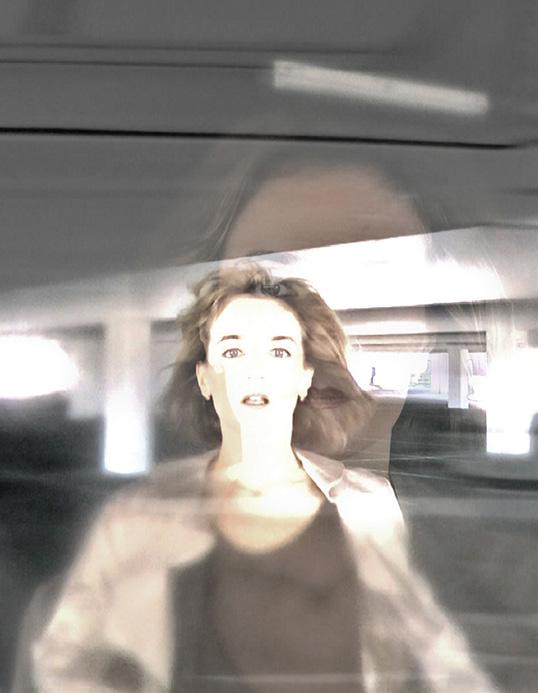


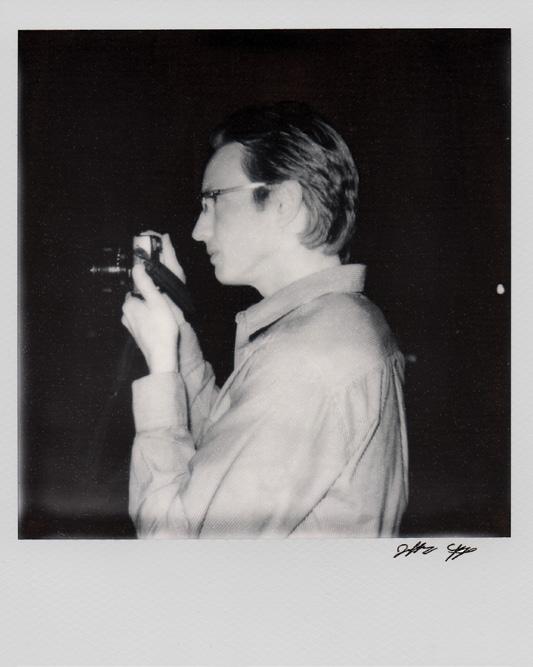
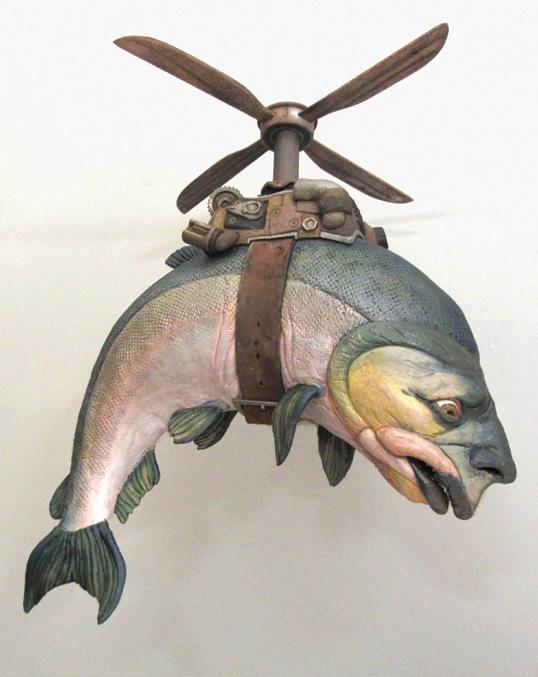





SJSU Master of Fine Arts Lift-Off Exhibition
Art Ark Gallery, May 3 –18, 2013 1035 South 6th Street, San Jose
Opening Reception: Friday May 3, 6–9pm
Gallery Hours: Tue - Sat: 12noon–4pm
artarkgallery.net
SJSU Art Department sjsu.edu/art
AMONG THE ARTISTS WHO STUDIED AT SAN JOSE STATE ARE WAYNE THIEBAUD, JAY DEFEO, AND ROBERT GRAHAM.
Marianne Lettieri
Sieglinde Van Damme
Lan Liu
Wesley T. Wright
Jeffrey Opp
Yvonne Escalante
Avery Palmer
Mo Gorjestani
Growing up in The Gardens neighborhood of San Jose, Mohammad Gorjestani’s parents pretty much let him do whatever he wanted as a kid. “We never had more than what we needed,” Gorjestani says about his modest childhood. The rough neighborhood provided many lessons for him, who came to the US with his parents during the Iranian Revolution.
There were rules in place in his household, though. Three of them, to be exact: Be kind, be honest, and do your best. It is these rules that Gorjestani has incorporated in everything he does.
could compete on a national scale. “There was a void and we filled it,” Gorjestani says.
“I want to be able to say I did everything I could to make the world better through storytelling.”
“At heart, I am a classic entrepreneur,” says Gorjestani. “If I see a problem, I don’t want to run away from it. I want to provide a solution. I want to be able to say I did everything I could to make the world better through storytelling.” This mix of his skills and interests keeps Gorjestani busy.
Like making films, for example. After graduating from Vancouver Film School, Gorjestani premiered his first film, “The Shade,” at the Tribeca Film Festival in 2008. Most recently, he is working on a feature tentatively titled “Somehow These Days Will Be Missed,” focused on San Jose during the modern day 1991 gold rush when people were coming to work in the tech industry. This film has earned Gorjestani the 2012 Kenneth Rainin Foundation Grant for Screenwriting from the San Francisco Film Society.
As Creative Director of MKSHFT/CLLCTV (read “Makeshift Collective”), a full scale production company in San Jose, Gorjestani helps brands connect their story with the audience. Previous clients include Toyota, HTC, and currently, Facebook. “We try to align brands with their values and tell those stories,” he says, believing there is a lot of value in San Jose from a production perspective, and recognizing a need for a production company that
His most recent venture is Volio, the startup Gorjestani founded with Ronald Croen, co-founder of Nuance. They partnered with Esquire Magazine to release an app which allows users to experience authentic human interaction, without actually interacting with a human being. The app uses artificial intelligence and voice recognition to direct the user down a conversational path. It’s like those “Choose Your Own Adventure” stories, only far more robust and with more options.
“Imagine flipping through a magazine, and someone is talking to you, asking you to respond,” Gorjestani says, explaining how the Volio app works. “All of a sudden you’re engaged.” He has hopes of turning the app into a tool for people to make their own interactive videos. “We’re ahead of the curve here.”
“When you get off the airplane [at San Jose International Airport], you’re supposed to be in the center of the tech universe,” Gorjestani says, providing an example of such an interactive video. “You should have Joe Thornton’s [likeness] saying ‘Welcome to San Jose. What do you want to do tonight?”
Those rules Gorjestani grew up with continue to guide him to be the best he can be. “I just think it’s my instinct to always be building something bigger than myself.”
Interview and Photography by Daniel Garcia
video REFUGE futurestates.tv
28
refugethefilm.com MKSHFT/CLLCTV mkshftcllc.tv VOLIO volio.me

mo gorjestani: film.design.start-up.
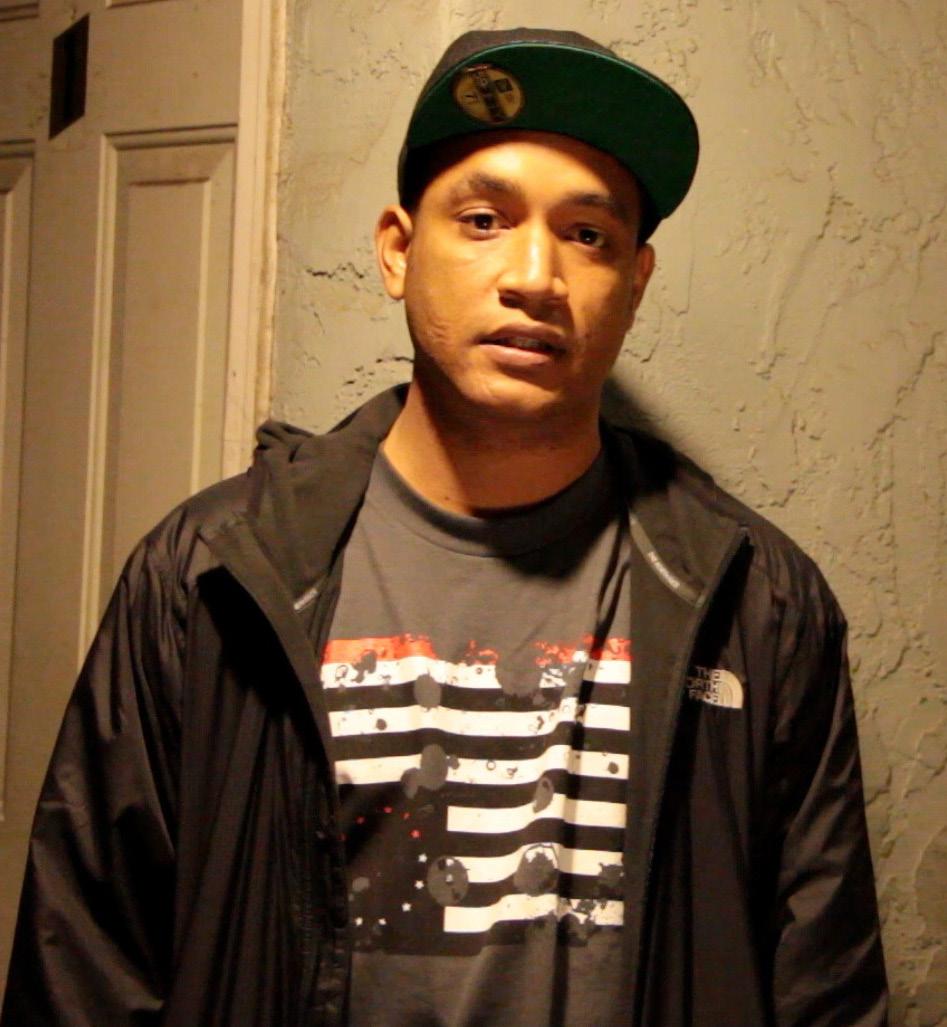
Scenes are Temporary, Movements are Forever
Written by FLora Moreno de Thompson
When Music in the Park came to an end in 2012, Matthew Gonzales found himself feeling upset. Once a great platform for local artists to play for the masses, the annual outdoor festival was shuttered due to city budget cuts, eliminating a popular music venue in San Jose. But instead of staying angry, Gonzales decided to channel his energy into something positive.
That something was a documentary, called Scenes are Temporary, Movements are Forever, to capture the work and stories of artists—like those that had once graced the stage at Music in the Park. “Artists are out here, whether [the city is] going to allow it or not,” Gonzales says. Gonzales, along with partners Daniel Muñoz, Fernando Perez, and Matt Posada, began interviewing local artists, photographers, musicians, dancers, and business owners to showcase the creativity emerging from San Jose.
While filming the documentary, Gonzales discovered that all artists had pretty much the same thing to say about the creative culture in San Jose. “Artists are getting frustrated, but they’re not taking their frustration out on anybody,” Gonzales says. “They’re doing what they always do: art.”
Gonzales is no longer angry; instead he is busy writing, interviewing, and filming as he tries to finish up the film. SaTMaF, as it’s called for short, will be released later this year as a YouTube series. Gonzales believes San Jose is going through an artistic renaissance, and he wants to everyone to notice. “We want San Jose to see it, but we also want to talk to the world.”
satmafdoc.tumblr.com
Trailer: http://bit.ly/SATMAF_SJ
Twitter: @SatMaf
Megabusive, stiLl from SATMAF (above) Influential undgerground hip-hop MC.
The Trims, stiLl from SATMAF (top right) 80s Alternative rock with modern edge.
Cris Reed, stiLl from SATMAF (bottom right) Soon to release LP that is a meld of music to form a folk/reggae sound.
30
video
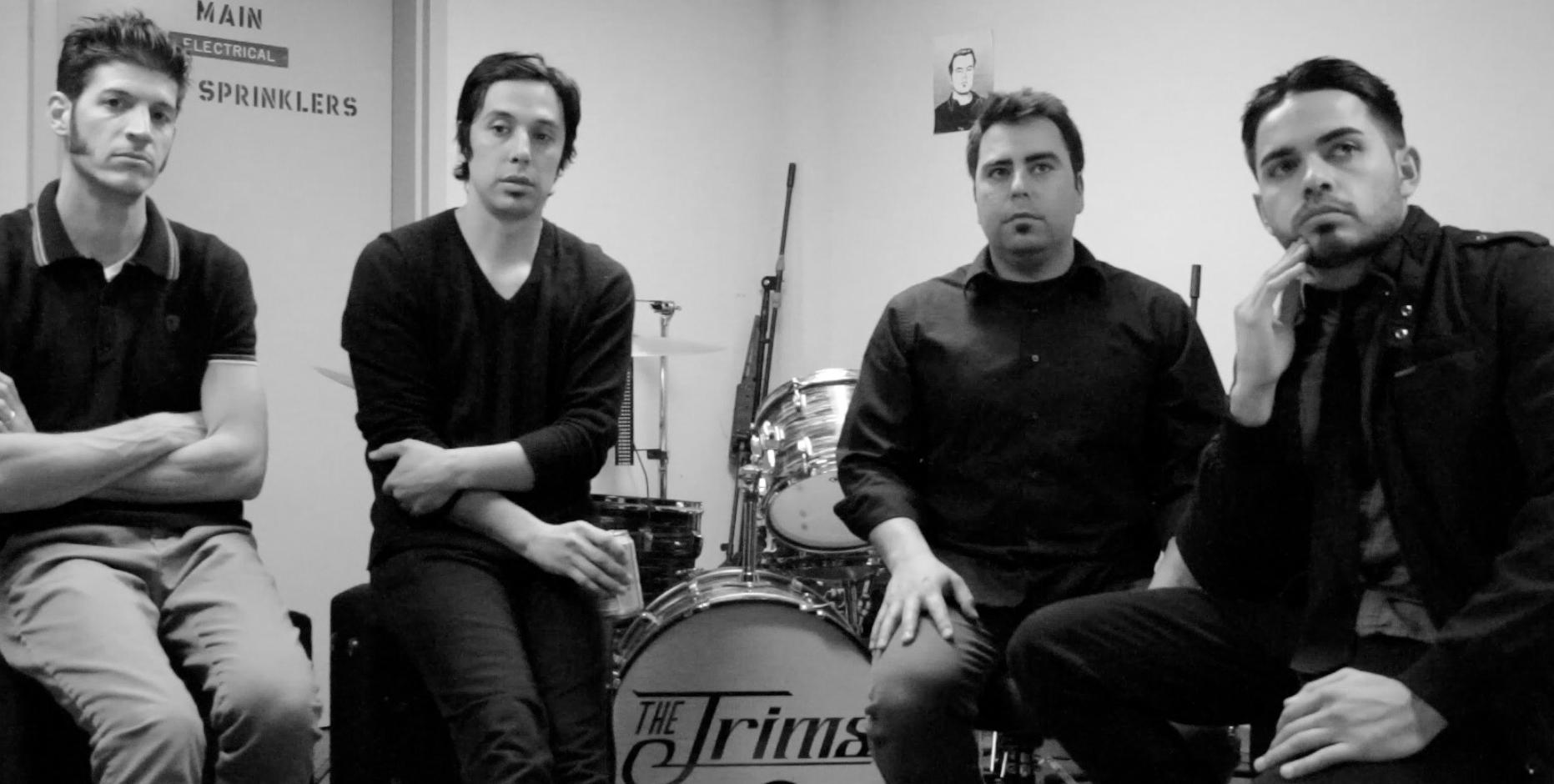

31

Shadowgraph Studios
Written by FLora Moreno de Thompson
If you’re a fan of Anya and the Get Down, you’ve probably seen Brandon van Auken’s work as director for their video Gone Baby Gone. His personal gritty and moody style is reflected in his work, but van Auken doesn’t want to limit himself to that. “I want range in my work,” says van Auken. “I’m still finding my voice.”
Since van Auken has always loved movies and video games, he realized he wanted to make a career out of it after taking multimedia courses in high school. “I’ve always wanted to do films,” says van Auken. “The end goal for me is telling stories.”
In between projects, van Auken challenges himself by studying and learning about motion graphics. “In order to be more successful, I have to do my best to stay on top of it.” When he’s not making music videos for local artists, van Auken works freelance on motion graphics, visual effects, and sound design for video games.
In the future, he hopes to do more directing and narrative filming. “I really don’t know what else to do,” he says. Currently working on writing a few short films, van Auken is exploring his own creativity. “The more creative, the better,” he says. “It comes easier that way.”
“LIQUOR LOCKER” and “TIME”
Photography campaign of vintage neon signs throughout San Jose. (above)
“MAYBE - TUB SKETCH” for the new Anya video (top right)
“MAYBE - TUB”
The final shot based off of the sketch (bottom right)
shadowgraphstudios.com
32 video


33
Today, DRUM! Magazine has an international readership, but it all started right here.
Written by FLora Moreno de Thompson
Photography by Daniel Garcia
media 34

“The reason these magazines exist is because of the instrument, not the people.”
“
Phil Hood
Andy Doerschuk
Phil Hood might consider himself a bad drummer, but that doesn’t mean he can’t publish a drum magazine. Headquartered here in San Jose and established in 1991 by Hood and Editorial Director Andy Doerschuk, DRUM! Magazine was the first magazine to feature drummers Travis Barker of Blink 182 and Chad Smith of Red Hot Chili Peppers on its cover. It also puts on DRUM! Night in conjunction with San Jose Jazz Summer Fest—part drum clinic, part concert event.
Besides serving as an educational and inspirational print magazine for drummers, DRUM!’s website offers lessons, gig listings, and equipment reviews. “Over 30% of our website traffic is international,” Hood says. “Some months it’s higher than that.” DRUM! is always testing the temperature of their readers to find out what they want to see in the magazine. Knowing more about who is turning the pages has been important to Hood since he began work in the industry.
How did you get started at DRUM! Magazine?
It’s kind of a long story. I used to work for Guitar Player Magazine in the mid 80s, in a department that was starting new magazines. I was laid off in 1991. A few months later, we started a zine for drumming. It was a tabloid that looked like the Metro. We started right here in the Bank of America Building. Andy Doerschuk, our Editorial Director, published that zine for 6-7 years. My wife was doing the books and there were a few part-time people. It was a free magazine. Drummers all over the world knew about it and they knew you could only get it in California. But it was a terrible business, we couldn’t grow beyond that. The only reason it survived is because we knew a lot of people in the music industry before we started. Eventually, it got turned into a regular glossy.
What has been your publishing experience before this?
I worked for McGraw-Hill Publishing right out of college. I was a sales rep and field editor, which means interacting with authors. I would go to universities and sell books and find out who was writing. Looking back on it was a really good gig. It was pre-internet, pre-cell phone, so you would travel around and—at 4:30pm—you were done. Summers were free, just like teachers.
I had wanted to be an editor. I have an economics and journalism degree. So I started writing for magazines and tabloids. I was eventually offered a job at Guitar Player publications. I ended up editing there and eventually became a publisher of magazines.
Have you guys always been based out of San Jose?
Yeah. We’ve had offices here, in Willow Glen, and for a while we had an office in Japantown behind the Gordon Biersch bottling plant. Because we were growing, we moved downtown in 2006. It was better for people commuting by train, and better for lunch.
What’s been the hardest part of running the magazine?
I think it has to do with what parts of the business you’re weakest at. I think we have poor circulation and our current efforts are based around that. With magazines and most businesses, it’s sort of finding that edge that works with a business plan. It’s not enough to just produce something good.
What’s been the biggest lesson you’ve learned on the job?
Take chances. Especially when you write about famous people or big companies, there are subtle and not-so subtle pressures to treat your topic too kindly and too seriously. Journalists are human beings, too. They want to be liked when they get a chance to talk to Ringo Starr or Neil Peart. But you shouldn’t be too nice. Your job is not to go negative but it is to illuminate, even if the subject doesn’t want you to open certain topics.
The second thing is that, in business, survival is victory. Every business faces ups and downs and most of them fail. When I talk with other entrepreneurs, I tell them to focus on surviving and not to take business too personally. When your business is doing well, it doesn’t mean you are a genius. And when times are tough, it doesn’t mean you are stupid. When you look at businesses around you, they are all the ones that figured out how to survive and thrive so far.
What has been the best part of the job?
The people. In the music and music products industry where our advertising comes from, a lot of the artists we deal with, writers and so forth, are not getting rich. The people you meet are really committed. You’ll meet a person who is selling guitar amplifiers and what you find is that they played in bands, maybe in touring bands, maybe they were a roadie, maybe they taught music—they all do it for love. There are a lot of wonderful people in this business.
Live music is starting to reinvent itself as an interesting thing for people to do.”
“
36

What other resources do you offer your readership?
Lessons. We’ve really started repositioning ourselves this year around this. Our idea is that there are a lot of resources about how to play better in DRUM! that we haven’t really been selling as the primary value. There is as much value to our magazine as there is in a $25 music book.
If you go back five or ten years, a lot of our covers are the band that was really hot the week their album came out. We had a reputation for that. That’s not as important anymore. There aren’t as many big name stars because of the collapse of record industry. Albums don’t matter anymore. There are all different ways people are becoming stars. My thinking is that the reason these magazines exist is because of the instrument, not the people.
What are your thoughts on San Jose’s music scene?
It felt like it fell in a hole for a while. In some ways it was much better in the early 90s. But it seems to have be picking up steam again lately. I’m not as in touch with it as other people. I’m not going out at night much. But it seems like we’re starting to see a new wave of San Jose bands. We’ve been through this long period where we had the years where the cops were trying to close all the clubs. Now there are new venues for music opening.
The recession was bad, but ultimately the recession will be better for live music. People’s lifestyles are changing and I think the current music culture is such bullshit—with $200 concert tickets— just really bad models of what music is all about. Live music is starting to reinvent itself as an interesting thing for people to do. I’m hopeful that there’s going to be more emphasis on local clubs, neighborhood clubs, and new ways of getting not just music, but art out to people.
Do you play the drums? No! I’m a terrible drummer.
Twitter: @drummagrocks drummagazine.com
37
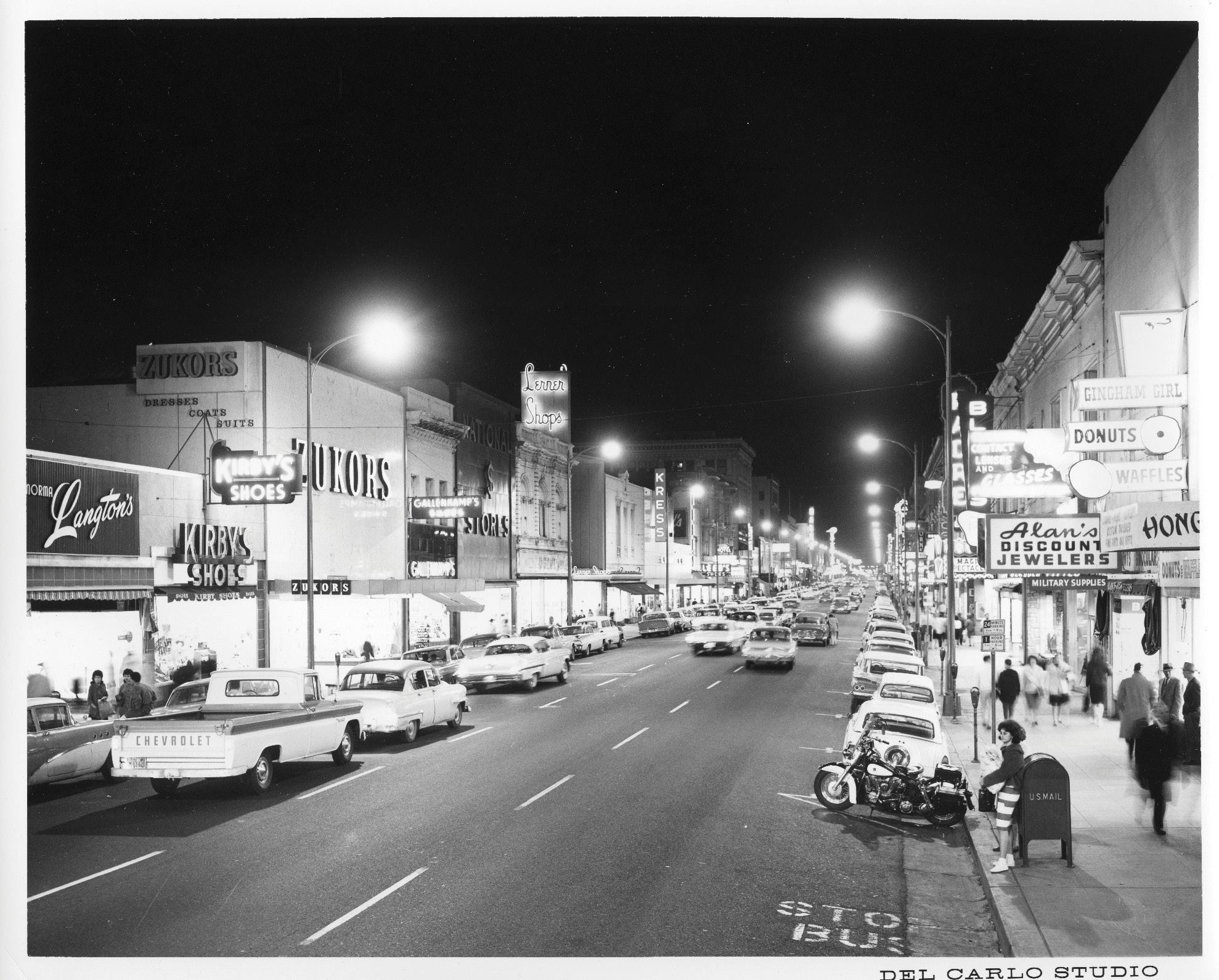
The Photographic Artistry of Arnold
Del Carlo
Written by Heather M. David
Capturing Silicon Valley’s Growth Spurt
photography 38
Images provided by Sourisseau Academy for State and Local History Dr. Martin Luther King, Jr. Library
When Arnold Del Carlo
first came to San Jose in 1948, there were orchards as far as the eye could see. The Santa Clara Valley was known as “The Valley of Heart’s Delight” and San Jose was the prune capital of the world. Yet within a few decades, the city of San Jose expanded from 17 to 120 square miles as the Valley transitioned from a major agricultural center to the high-tech capital of the world.
Few can recall firsthand the days of prunes, pears, and apricots, of beautiful blossoms and fragrant air. Fortunately, postcards, history books, and museums provide records of this period. For most, the Valley is “Silicon Valley”—a scattering of cookie-cutter, high-tech campuses, shopping centers, and housing tracts.
Sandwiched between the eras of prunes and iPads sits an integral part of the area’s history. Largely overlooked and rarely celebrated, the period spanning roughly 1950 to 1970 represents a time of general prosperity, spurred by aggressive economic development and a postwar population boom.
It was during this time that San Jose College became a university, the South Bay joined the Jet Age with a modern air terminal, and some of the last working farms succumbed to development. This period might fade from the collective consciousness forever if not for the efforts and talents of the photographer Arnold Del Carlo.
Viewing the photography of Arnold Del Carlo is like experiencing a window into the Valley’s recent past.
Take for example, San Jose’s IBM Cottle Road campus. Designed by Bay Area architect John Savage Bolles (best known for his design of San Francisco’s Candlestick Park), the site was visited by Soviet Premier Nikita Khrushchev in 1959. The IBM campus, with its colorful modern buildings, open courtyards, and public art displays, represented cutting-edge design in the 1950s and was the recipient of numerous awards. Arnold Del Carlo captured the campus in all its mid-century glory and photographed the IBM product line, too.


Or how about downtown San Jose in the early 1950s, prior to a mass exodus to the suburbs? A bustling center of commerce, entertainment, and fine dining, San Jose’s downtown was the place to be in 1955. Some blame Valley Fair Mall for the demise of San Jose’s city core, but Del Carlo’s photographs of the area’s numerous postwar shopping centers tell a different story. The elegant Valley Fair was but one of many suburban malls, each competing for the consumer dollar.
Ever wonder what came before Tesla Motors?
If your response is NUMMI, you are only partially correct. Prior to NUMMI, the Tesla facility was home to General Motors, once one of the area’s largest employers (and one of two automobile plants—the other being Ford). The sleek General Motors plant was yet another innovative design by John Savage Bolles and Del Carlo documented its entire construction, including interior, exterior, and aerial views.
Beauty can be found in the most ordinary of subjects, but it takes a true artist to capture it.
The Arnold Del Carlo Photograph Collection resides at the Sourisseau Academy for State and Local History and spans a remarkable 30-plus years. The collection is largely San Jose-centric and consists of photographs taken both by land and by air. While most photographers of the time had areas of specialization, Del Carlo was equally adept at commercial, portrait, fashion and wedding photography. Few professional photographers exhibit this kind of versatility, making the Del Carlo collection all the more unique.
From people working in the Valley’s canneries to the corporate campuses of the future, from private weddings to political dignitaries, Del Carlo was the man behind the lens. Buildings were photographed
with an understanding of architectural engineering and the principles of good design. In a pre-Photoshop world, models were charmed into exhibiting their best features and captured in optimal lighting conditions. Arnold Del Carlo is San Jose’s Julius Shulman, for Del Carlo was a man with similar talents, only differing professional opportunities.
When asked how he was able to work so effectively with such a variety of subjects, Del Carlo is quick to offer credit to the architects, product designers, and models he photographed. But it is a true artistic gift to be able to capture the beauty of a bowling alley, gas station, or grocery store. Arguably, Del Carlo did just that, and through his eyes San Jose never looked better.

“Sandwiched between the eras of prunes and iPads sits an integral part of the area’s history.”
40



41

*not all participants pictured
Portraits by Daniel Garcia
photography 42
Knowing there’s a wealth
of talent in San Jose’s fashion scene that doesn’t get the recognition it deserves, Content Magazine and Umbrella Salon decided to do something about it. We put a call out to photographers, models, makeup artists, and hairstylists to give them a chance to show what they can do under a bit of pressure—and the first-ever Image Challenge was launched.
The mission? Thirteen teams, each comprised of a model, hairstylist, photographer, and makeup artist—who had never met each other before—were given just thirteen hours to provide Content Magazine with three print-ready images.
IMAGE
CHALLENGE 13

Scott MacDonald, photographer
Charlotte Blanc, model
Jan-Michael Macutay, hair stylist
Gizelle Morales, makeup artist
Participants arrived at Umbrella Salon on a brisk Sunday morning, and teams were chosen randomly by pulling names out of paper bags. Rules for the day were pretty relaxed, which for some participants, contributed to the challenge. Everyone had to show up ready for anything, including the weather. The teams needed to come up with an idea for the photoshoot that everyone agreed upon. All photographs had to be taken within San Jose city limits, but not in a studio.
Once teams were assigned, the hairstylists and makeup artists got to work. When the models were ready, the teams began to trickle out of the salon to take photos. An old motel, City Hall, a barn, an old water tower—suddenly, everyday sites all over the city became backdrops for fashion photo shoots for the day.
The result? Pure creativity. As model Amy Vosters remarked, “The time crunch pushed our team to be efficient and produced some great results in the end.”
Check out these shots from Image Challenge 2013—and keep an eye out for more from these talented individuals who are shaping our creative community.
For team contact information, visit content-magazine.com
Andrea Henneman, photographer
Alexis Pinkney, model
Lisa Nguyen, hair stylist
Carla Tersini, makeup artist

Daniel Valencia, photographer
Asha Medhekar, model
Jennifer Singleton, hair stylist
Samantha Bishop, makeup artist
Ed Garcia, photographer
Mani Sultani, model
Dacia Carroll, hair stylist and makeup artist

Annamarie Cosio, photographer
Vanessa Leigh, model
Samantha Clark, hair stylist
Celeste Thompson, makeup artist
Paul Ferradas, photographer
Courtney Musser, model
Karla Fenton, hair stylist
Jennifer Torres, makeup artist
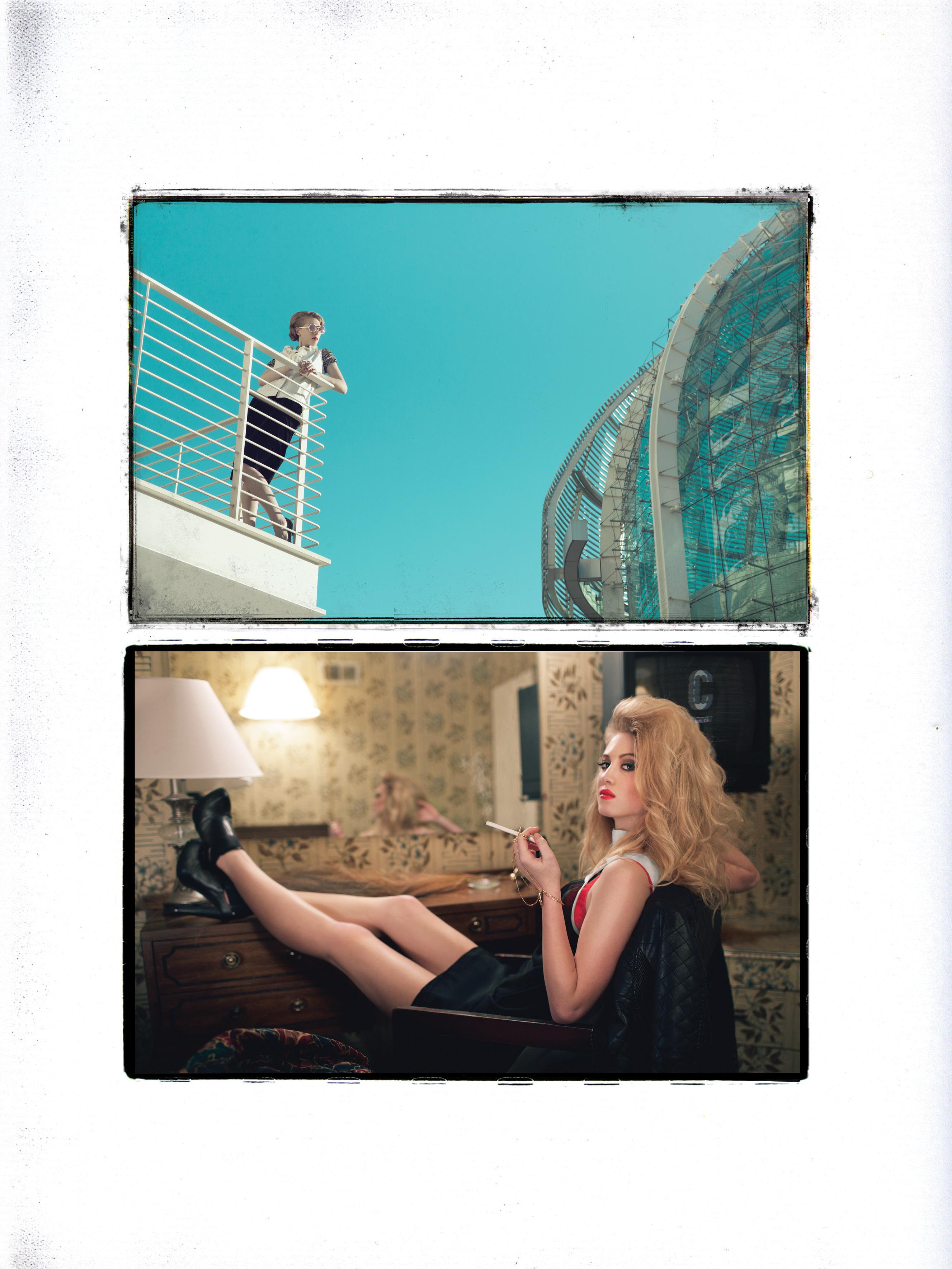
Mark Sebastian, photographer
Morgan Murphy, model
Anjelika Martinez, hair stylist
Charlise Tran, makeup artist
Audre Van Broers, photographer
Morgan Douglas, model
Nathan Nguyen, hair stylist
Jennifer Gamez, makeup artist
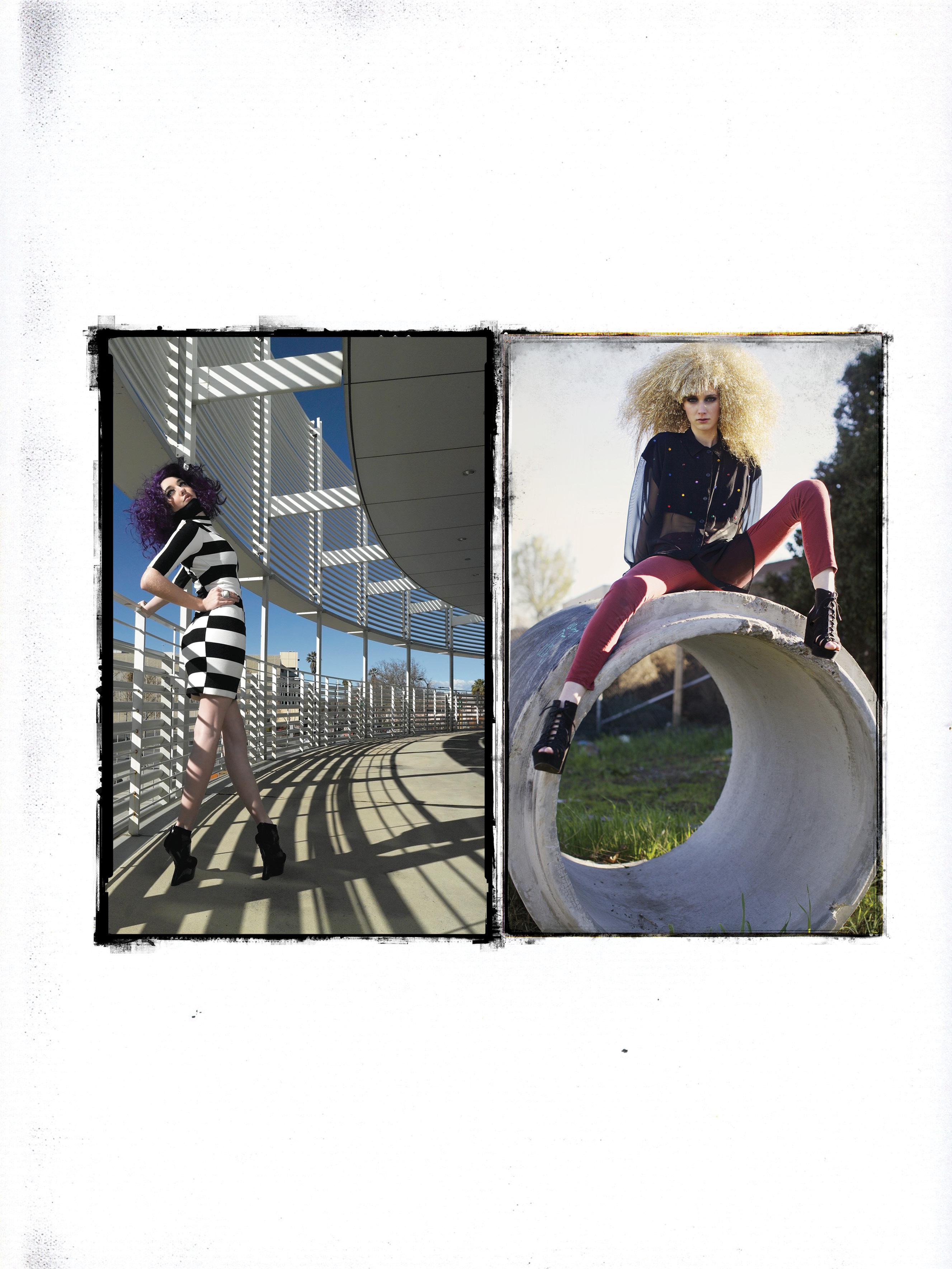
Randy Basso, photographer
Jordyn Ball, model
Chloe Lomeli, hair stylist
Jennifer Toy, makeup artist
Lauren Davison, photographer
Samira Ghassemian, model
Jade Deveraturda, hair stylist
Vanessa Quinteros, makeup artist

Jeremy Givens, photographer
Miroslava Svoboda, model
Mathew Lotto, hair stylist
Melanie Caples, makeup artist
Nicole Quihuis, photographer
Damir Emric, model
Sonia Paniagua, hair stylist and makeup artist

Khiem Hoang, photographer
Amy Vosters, model
Jan-Michael Macutay, hair stylist
Gizelle Morales, makeup artist

THE LIMOUSINES: ANSWERING ONLY TO THEMSELVES
Written by Flora Moreno de Thompson
Photograhy by daniel Garcia
Music

When Eric Victorino and Giovanni Giusti—also known as The Limousines—set out to record their sophomore album, they wanted to do it their own way. No record labels allowed.

On an unusually warm February afternoon, Eric Victorino and Giovanni Giusti sit outside a coffee shop to talk about making music. The electropop duo, also known as The Limousines, are currently at work on their second album, Hush. It is slated for release on June 6, but they no longer have a record label or its resultant deadlines to answer to anymore. “Being our own bosses has let us take our time, which we think is better for the end product,” Victorino says. “But I can already feel people getting a little impatient.”
Seven months after releasing their debut album Get Sharp, the Limousines signed a record deal with Dangerbird Records. Their hit single “Very Busy People” was in heavy rotation by then on local radio stations, satellite radio, and MTV. “It wasn’t even supposed to be an album,” says Victorino. “We got the right attention at the wrong time.” The Limousines practically went viral.
But the record label didn’t do what it promised it would to help propel The Limousines to the next level. Their music wasn’t promoted well. The label didn’t pay for music videos or tours. Worse still, the band no longer owned the music they had created. Victorino and Giusti were disappointed and disillusioned. They broke up with the label and decided to make music their own way.
It was 2012 when Giusti and Victorino realized that the only way to make an album just the way they wanted was to do it all themselves. They didn’t want to sign with another label and become another cog in the music industry machine. They also didn’t want to lose control of the rights to their art.
“The main purpose of record labels used to be to deliver music to fans,” Victorino says. “To take it from the band and put it in
“WE WANT TO MAKE A RECORD THAT SOUNDED LIKE WHAT WE LISTEN TO AND WHAT WE LIKE,” SAYS GIUSTI. “OUR FIRST ALBUM WAS MORE OF AN EXPERIMENT.”
the hands of people who want it.”
With online music stores, music subscription services, and online radio, the notion that a record label could help promote an album and distribute CDs to a record store seemed archaic.
Without a record label, they needed to find a way to fund their next album. The Limousines turned to their fans for help. They launched a Kickstarter project to fund their sophomore album. The duo asked backers for $30,000 to cover the expenses needed to record, promote, and distribute an album sans record label.
The Limousines hoped to raise that money in thirty days; if they were short of their goal by even one dollar, Kickstarter’s “all-or-nothing funding” meant the band wouldn’t see a penny. Luckily for them, their backers were generous, more than doubling the initial funding goal to raise $75,808. Some of the funds raised have been used to buy new recording equipment, allowing the band to make music in their own studio and on their own time. “To see people show that belief in us was just incredible,” says Victorino.
The two were first introduced through a mutual friend, initially communicating via text messages. They went on to collaborate on songs without meeting in person, sending music files and lyrics back and forth. Their chemistry, both as bandmates and friends, is apparent on stage and off. It translates to their music-making work ethic, too.
Take the song “Haunted” on the upcoming album, for example. “Gio sent me this beat,” Victorino says. “I was listening to it riding my bike, and I thought about it for
52
awhile.” One day while they were recording in the studio, Victorino asked Giusti to play the track. Victorino began singing the words that had been going around in his head. “I wasn’t even that stoked off that beat,” Giusti says, but they decided to keep it for the album. Much of the song is from that original take.
They both agree that making music should feel instinctive, and recording a song from the first take isn’t necessarily a bad thing. “If you start to believe you have to work really hard at something, then you stop believing in your instinct.”
Giusti begins working on music in the mornings, when he feels more creative. For Victorino, he waits until he’s ready to make something. Their recording space is close to their homes, making it easy for them to meet and work on the album.
“The process goes

both ways,” he says. For the most part, Giusti makes the beats while Victorino writes the lyrics. “We send stuff back and forth, and we don’t finish songs we aren’t going to keep,” Victorino says.
Victorino says Hush’s lyrics will delve a little deeper, unlike Get Sharp. “The last album was full of general statements; it was fun and sarcastic,” Victorino says. Fans will still hear the upbeat and danceable sounds of the first album, they’re just coming from two musicians who have matured since then. Between Get Sharp and Hush, we’ve had friends die, difficulties in personal relationships, and a lot of heavy things have happened that have guided us a little bit,” Victorino says. “It was also two people that didn’t know if we were a band or not. Now we know we want to be around for a long time.”
Despite not having a room of record label executives to answer to, The Limousines still feel a lot of pressure to create their second album they are proud of. “I’ve never had a sophomore album,” says Giusti. The band has a lot of fans (and Kickstarter backers) anxiously waiting for the release.
“For our first album, we had no pressure about what to sound like when we first released something,” Giusti says. “People know you for that. Making a second record, we have this fan base now...are they going to like it? What are they going to think?”
This summer will be busy for the band, as The Limousines are already thinking about touring and making new music videos to promote the new album. They even turned down a few opportunities to go on tour to focus on writing and recording music for Hush “What’s important is us staying motivated and knowing that we don’t have anyone to blame but ourselves,” Victorino says. He wants to make up for time lost while being signed to a record label a few years back. “We made a record then sat around,” Victorino says. “We can’t do that again. We gotta keep making music.”
The Limousines’ new album Hush will be available on iTunes June 6.
Twitter: @thelimousines
Instagram: @thelimousines thelimousines.com
SAN JOSE SOUND
NO MATTER WHAT YOUR TASTE IN MUSIC, SAN JOSE’S GOT IT.
If you ever find yourself thinking there isn’t anything to do in San Jose, you’re not looking—or listening—hard enough. With live music being performed just about every week at downtown venues, there are plenty of ways to spend an evening. Thanks to the great weather, you can enjoy some sweet sounds outside the clubs. Take in some cool jazz at San Jose Summer Jazz Fest or bring the family to celebrate a Target Summer Pops concert. You can find something to suit all tastes from the colorful flavors of the San Jose Mariachi Festival to the up-and-coming Left Coast Live. The free monthly Daydream Nation shows at San Pedro Square Market are a great Saturday night setting for new local bands and great food and drink.
San Jose has produced some household names like The Doobie Brothers, Kung Fu Vampire, Smashmouth, Los Tigres Del Norte, and No Use For A Name. But there are lots of new acts worth your of attention. Imagine the kick of reminiscing about the first time you caught a famous band in an intimate local space.
So take the risk. Get out there and listen to some new contenders for space on your playlist. Jazz or classical, indie rock or mariachi music, there is something for everyone in this city.
Here is a sampler of local talent to whet your appetite. Read on to discover six different musical influences in San Jose. Then get out there and check them out for yourselves. Happy listening.
54 music
SAN JOSE SOUND

Mariachi Azteca
Mariachi music has been around for decades in its current form, an important part of Mexican culture and folklore. Their signature charro costumes and sombreros are iconic; the traditional songs serve as a type of Mexican oral history. Learning to be a mariachi is a skill often passed down from one generation to another with great pride and reverence.
It is common to hire a mariachi group to celebrate family events, religious holidays, and other important occasions. While there are many mariachi groups all over Northern California to choose from, many people consider Mariachi Azteca to be the area’s finest.
The San Jose-based Mariachi Azteca was formed in 1981. Besides performing at private and public functions, Mariachi Azteca members also teach music lessons
to students of the San Jose School of Arts and Culture at the Mexican Heritage Plaza. The group, led by musician Juan Diaz, is made up of six members, though sometimes they perform with additional musicians.
There’s no need to wait around for the San Jose Mariachi Festival to catch a Mariachi Azteca performance, where they are the host mariachi group. Just head over to Tacos al Carbon on Story Road every Saturday and Sunday night at around 7:30 for dinner and you’ll also be treated to a mariachi performance.
Written by Flora Moreno de Thompson
Photography by daniel garcia
NO MATTER WHAT YOUR TASTE IN MUSIC, SAN JOSE’S GOT IT.
Bookings: 408.379.9019 55
SAN JOSE SOUND
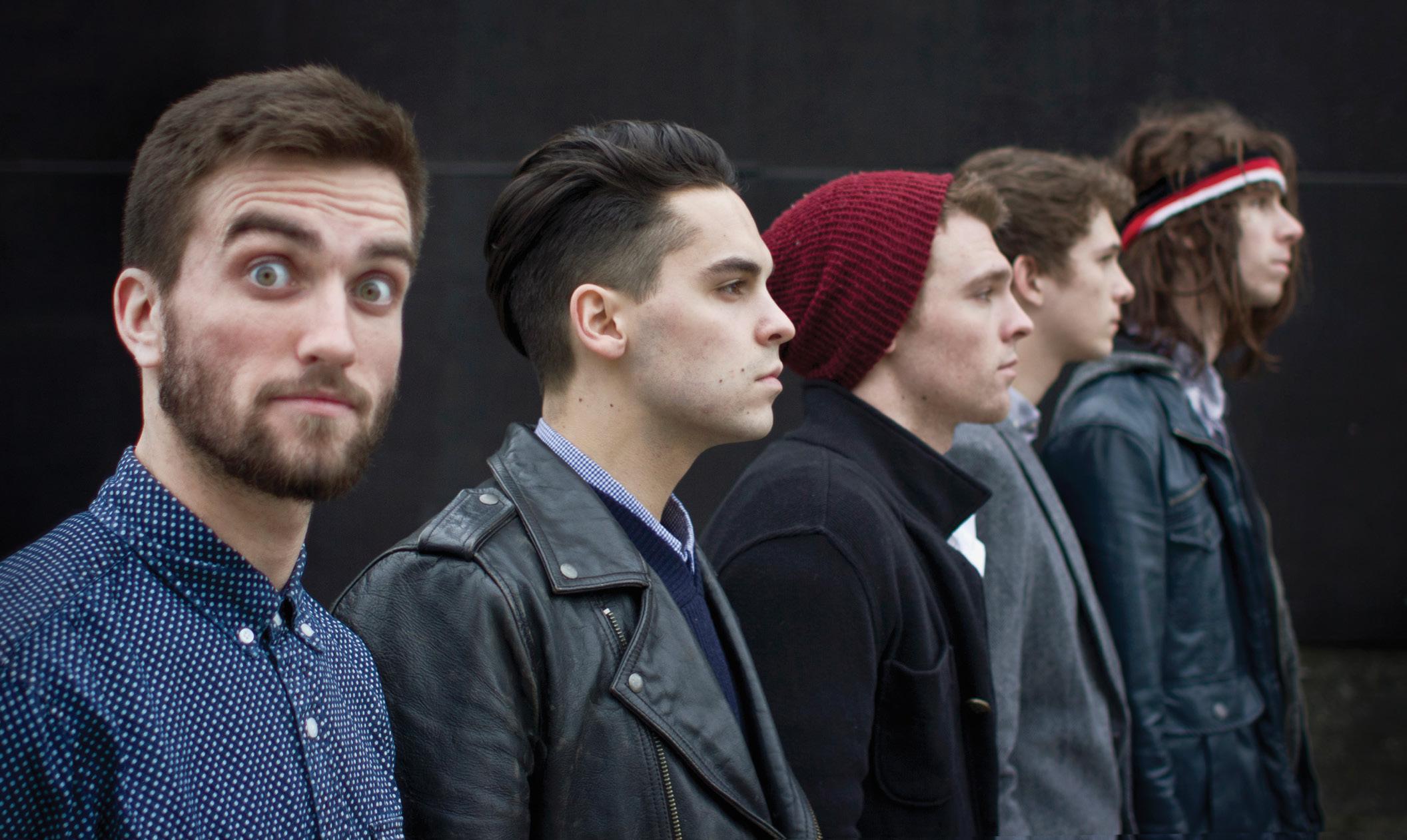
A YAWN WORTH YELLING
The San Jose five-piece known as A Yawn Worth Yelling creates vocal harmonies on top of dense guitar licks, producing a rhythmic series of intricate melodies that almost overwhelm.
“We want to create an experience for those who are listening,” says drummer Taylor Stover.
Guitarist Brayden Deskin’s melodic guitar leads hint of both math rock and indie/alternative melodies, with harmonized vocals to provide density.
“We combine the best of two distinct galactic space matters of music,” jokes Deskin. “You can’t help but clamor for your telescope.”
AYWY’s music is more than just catchy tricks: it’s intriguing and punchy, yet often
subdued and mellow. The dynamic tempos provide for a refreshing linear progression of punch throughout sets as well as a progressively-situated album on their first full-length release, Hieme Bellum
“We try to be energetic on stage, while providing balance with songs that are mellow and beautiful,” Stover says. “We want you to know who you’re listening to, but still get surprised by us. It’s not too obscure, but it’s not what you’d expect.”
After a successful Kickstarter campaign raised $2,700, AYWY is writing, recording, and playing as many shows as they can—with plans to release a new EP due out this summer.
“We write fun, catchy and intricate music,” explains Bassist Johannes Hiene. “You could choose to listen to our music
without obsessing over the subtleties of the instruments, or you could really dissect what is going on the under the vocals.”
AYWY’s entire music catalog is available as a pay-what-you-want download on ayawnworthyelling.com.
Facebook: ayawnworthyelling Twitter: ayawnworthYELL ayawnworthyelling.com
Written by Leo Postovoit
Photography by daniel garcia
NO MATTER WHAT YOUR TASTE IN MUSIC, SAN JOSE’S GOT IT.
56
SAN JOSE SOUND
NO MATTER WHAT YOUR TASTE IN MUSIC, SAN JOSE’S GOT IT.
Elena Sharkova balances her baton deftly on the tip of her finger, demonstrating the balancing act that is her life. “I consider myself fearless,” she says. “I’m not aggressive, I just roll my ‘R’s.”
Ever since she emigrated to the U.S. from her hometown of St. Petersburg, Sharkova has been learning how to juggle her expectations and her enthusiasm. Coming from a world of subsidized art performed only by highly educated professionals, she needed to learn to temper her approach to suit American choruses. Sharkova felt that she had lost that balance when she taught at San Jose State. Telling students that they could teach orchestra, band, and choir simultaneously felt disingenuous—quality demands time.
As she explains to her singers at Symphony Silicon Valley Chorale, where she serves as Chorale Director, “Mozart did not write one requiem for amateurs and another for professionals. There is only one.” Sharkova knows that her singers have families and demanding jobs, “but half of them sing 90 minutes of Verdi by heart. Can you imagine how much they practice?”
Breaking through the glass ceiling as a female conductor was not easy, especially behind the Iron Curtain. Because her career options were so limited in Russia, Sharkova now feels compelled to talk with children, their parents, and teachers about music and reaching their potential. As an inspirational speaker, she tells people not to “just marinate in your own mediocrity.” Too many of her audiences consider the arts to be just the ‘cherry on the top’ of an education.
Sharkova is also artistic director for Cantabile Singers of Silicon Valley, a youth chorus with 300 singers aged four
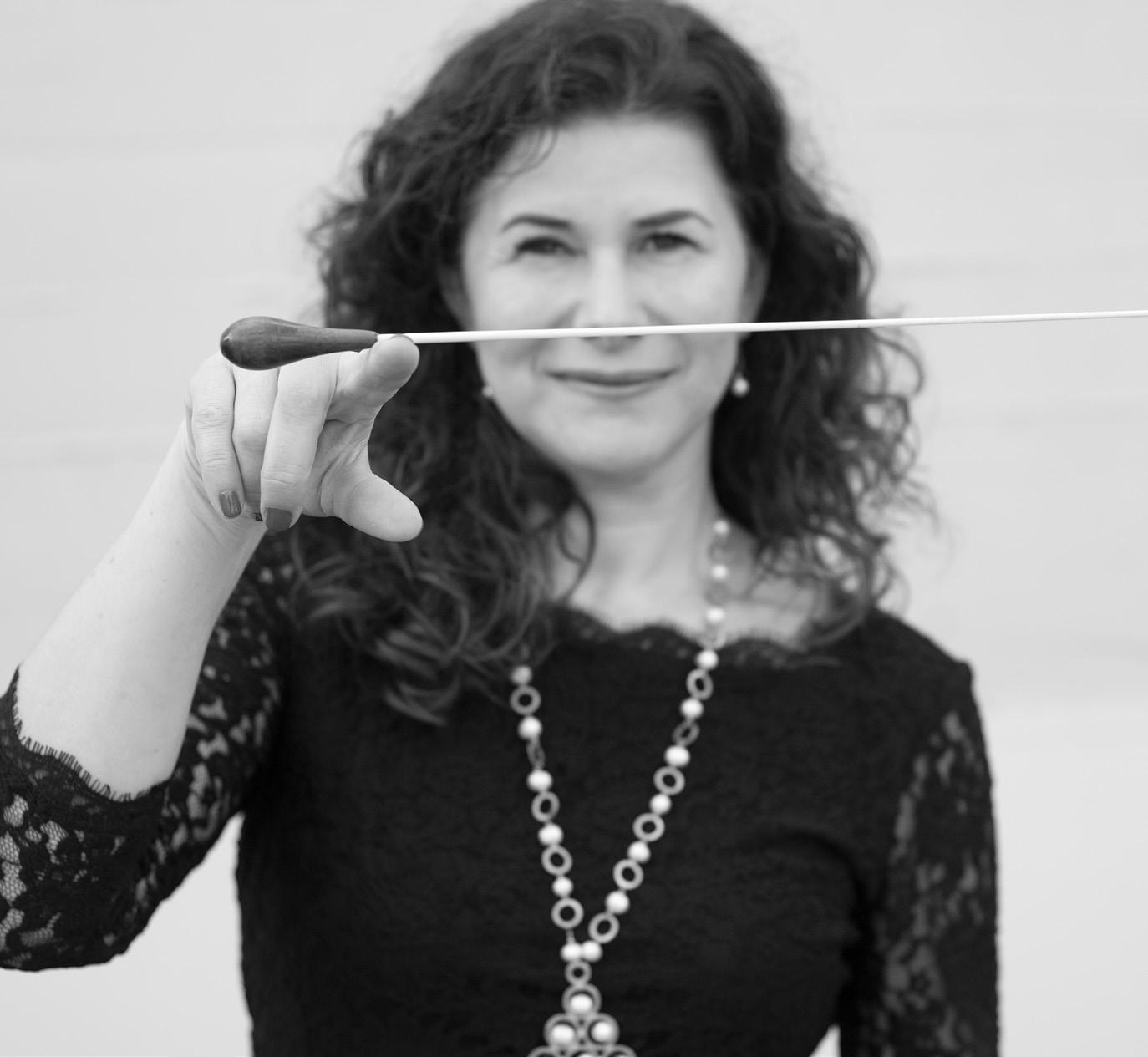
to eighteen. Although it is challenging to accomplish her goals in just one rehearsal per week, the children rise to the level of her high expectations, despite their heavy academic schedules.
Curiosity drives each facet of her life and she has no patience for singers that do not share her thirst for knowledge. In Russia, “you took a train to the public library and you dared to ask for a dictionary. The librarian would follow you and ask what you are translating.” She gestures at her phone and says,” Now it takes 0.2 seconds on Google. I timed it.”
Ultimately, Sharkova admits, her balance is found in the music. “Musicians are explorers of the human heart. Nobody cares what you do from 9 to 5. You have a two-minute chance for the audience to fall in love.”
symphonysiliconvalley.org cantabile.org
Written by Gillian Claus
Photography by daniel garcia
57
Elena Sharkova
SAN JOSE SOUND
NO MATTER WHAT YOUR TASTE IN MUSIC, SAN JOSE’S GOT IT.
Appearing for the past twelve years on the many stages at San Jose Jazz Summer Fest, Laila Smith has had the chance to grow up before San Jose’s eyes. First featured as a choir performer at six, she’s charted a steady course to highlighted performer, notching several performance and songwriting accomplishments in the process.
Smith’s long been a prodigy in the local jazz scene, a young vocal dynamo able to hold her own with more seasoned players. Yet only recently did she find someone to help articulate her musical voice.
In early February, she released the eponymous Polenta EP with pianist Paul Bloom. The duo rose out of a casual songwriting get-together among friends. Smith quickly realized that this was something special and, after visiting Bloom in Stockton to continue writing, the two knew they were a songwriting tandem.
“Both of us are so involved in the process,” Smith explains. It’s a dynamic present in the group’s name, a playful mash-up of “Paul” and “Laila” suggested by songwriter Becca Stevens. The two ran with it, finding the symbolism emblematic of their transparent songwriting process. “We’re not just two people who work together,” she says. “It’s definitely more than that.”
In a sense, Smith has been telling her musical story for over a decade, albeit through the lens of other composers—her minimalist rendition of “My Favorite Things,” accompanied by just thumb piano, comes to mind. Now able to showcase tracks like “Among These Leaves,” her music fully bears her signature.
She may not have been seeking out Bloom, but she’s been quite happy with the results. It’s a pairing she expects to continue longterm.
“In the last couple years, I had this realization that it’s not about playing with the best players. It’s about who you emotionally connect with,” she says. “I’ve never felt so validated. It just makes music seem so right.”

LAILA SMITH
Written by Brandon Roos
Reverbnation: lailasmith
Photography by Andrea Henneman
58
SAN JOSE SOUND
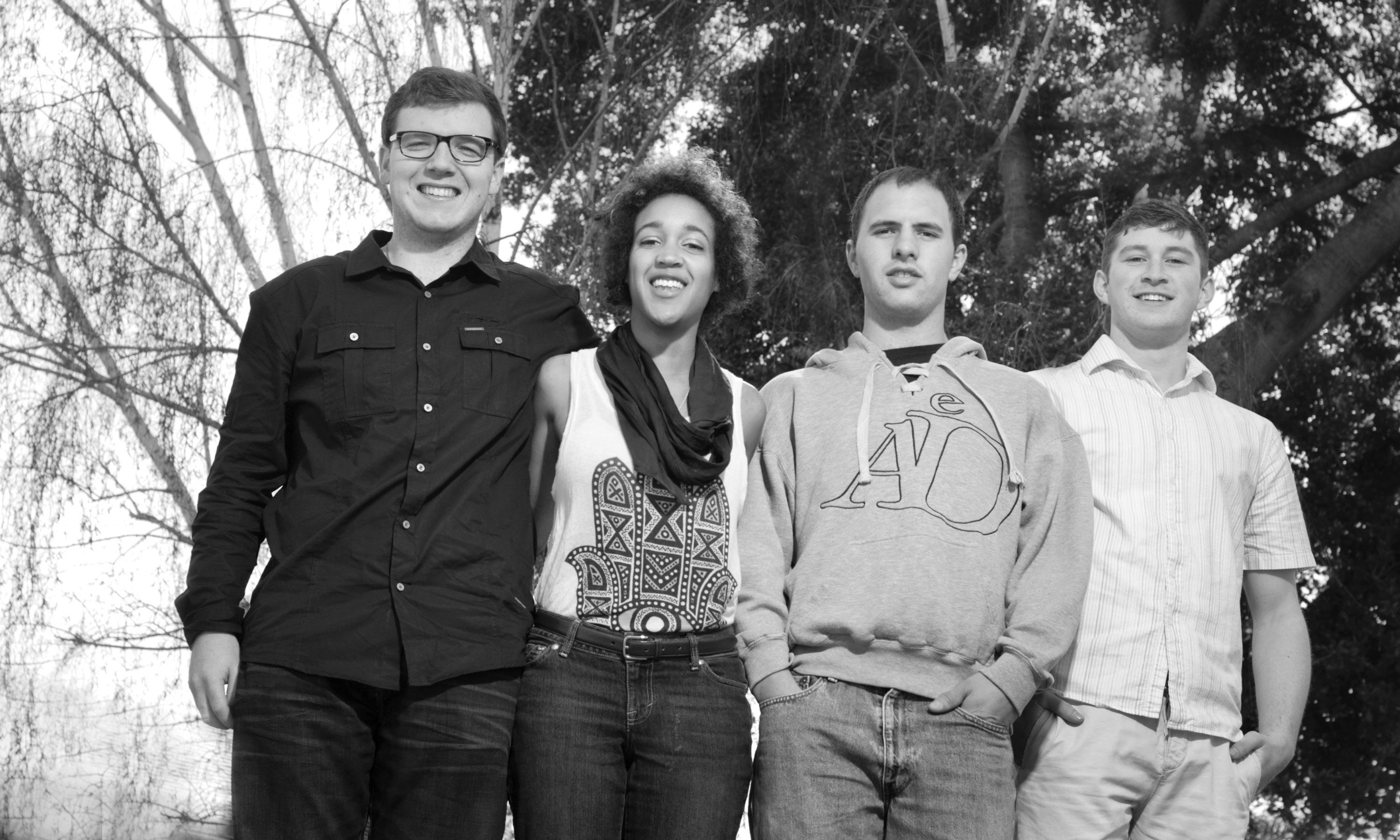
THE JURASSIC
If ever a group encompassed a melting pot of sound as diverse as its city, The JurassiC would be it. This soulful group of musicians, formed in 2012, doesn’t limit itself to any one genre and never plays a song the same way twice.
Jackie Gage, Chris Main, Bennett RothNewell, Will Bohrer, and Michael Benning are old souls trapped in young bodies. The JurassiC jams on beats range from hip-hop to Latin and everything in between, all stemming from a jazz chord.
Lead songstress Gage’s voice adds a layer of smooth, soulful melody to the mix. “Being the younger guys on the scene, we’ve been learning so much from local music [and our] peers,” Gage says.
Like the eclectic murals around the city of San Jose, The JurassiC’s sounds of organized chaos reflect the South Bay’s distinct artistry. And then, just when you think
they couldn’t possibly incorporate any more musical influences to their sound, they start flirting with funk, swing, and even salsa.
Audiences can expect to hear a mix of original songs by the band, such as “Change Your Mind,” as well as covers of popular Motown hits. The JurassiC may sound retro in one show and funkier on the next. “There are no limits,” Gage says of the band’s music.
The JurassiC will be performing at San Jose Jazz Summer Fest on August 9-11 and will be releasing an album later this year.
Facebook: thejurassicmusic thejurassicmusic.com
Written by Jennifer Elias
Photography by daniel garcia
IN
NO MATTER WHAT YOUR TASTE
MUSIC, SAN JOSE’S GOT IT.
59
SAN JOSE SOUND
NO MATTER WHAT YOUR TASTE IN MUSIC, SAN JOSE’S GOT IT.

WILL SPROTT
Singer/songwriter Will Sprott is often lumped with folky indie bands, bearded sad-sacks who long for the spiritual fulfillment offered by Montana filling stations—if only the big city would let them go. But Sprott is warmer blooded: his fantasy escape is south, to Memphis and its legendary soul label Stax Records.
From Sprott’s high-water slacks to the taxidermy prop to backup singers decked out in wigs, sombreros, and bolts of tulle, the visuals are an indie quirk fest so desperately demanding affection that you’ll want to look away.
When this guy’s good, he’s really good. In Sprott’s sonic landscape, you’ll find hardly a trace of his native San Jose, the sprawling suburb of ranch homes and restless youth from which he recruited his band The Mumlers.
Working some twelve instruments among them, the skateboarding buddies-turned-
sextet put out two albums that shuffle the deck of Americana: old-timey twang, Dixieland and funeral jazz, a touch of searing garage rock, plus a nod to Tom Waits and some outright theft from Cab Calloway.
But Sprott hits his mark in the idiom of 50s and 60s rhythm and blues. This is captured on the title track of The Mumlers’ second album, Don’t Throw Me Away, an Otis Redding-style weeper with a directness and vulnerability elsewhere diluted by overenthusiastic instrumentation.
In the way Sprott splices his musical DNA—though not in sound—The Mumlers evoke another suburban Bay Area band who also seemed to slither out of the swamp, El Cerrito’s Credence Clearwater Revival. As songwriters, both John Fogerty and Will Sprott dredge the collective unconscious of American music to turn out a seemingly authentic pop with roots in a tradition that exists nowhere but in the singer’s imagination.
Facebook: willsprott willsprott.com
Written by Richard Faulk
Photography by will Sprott
60
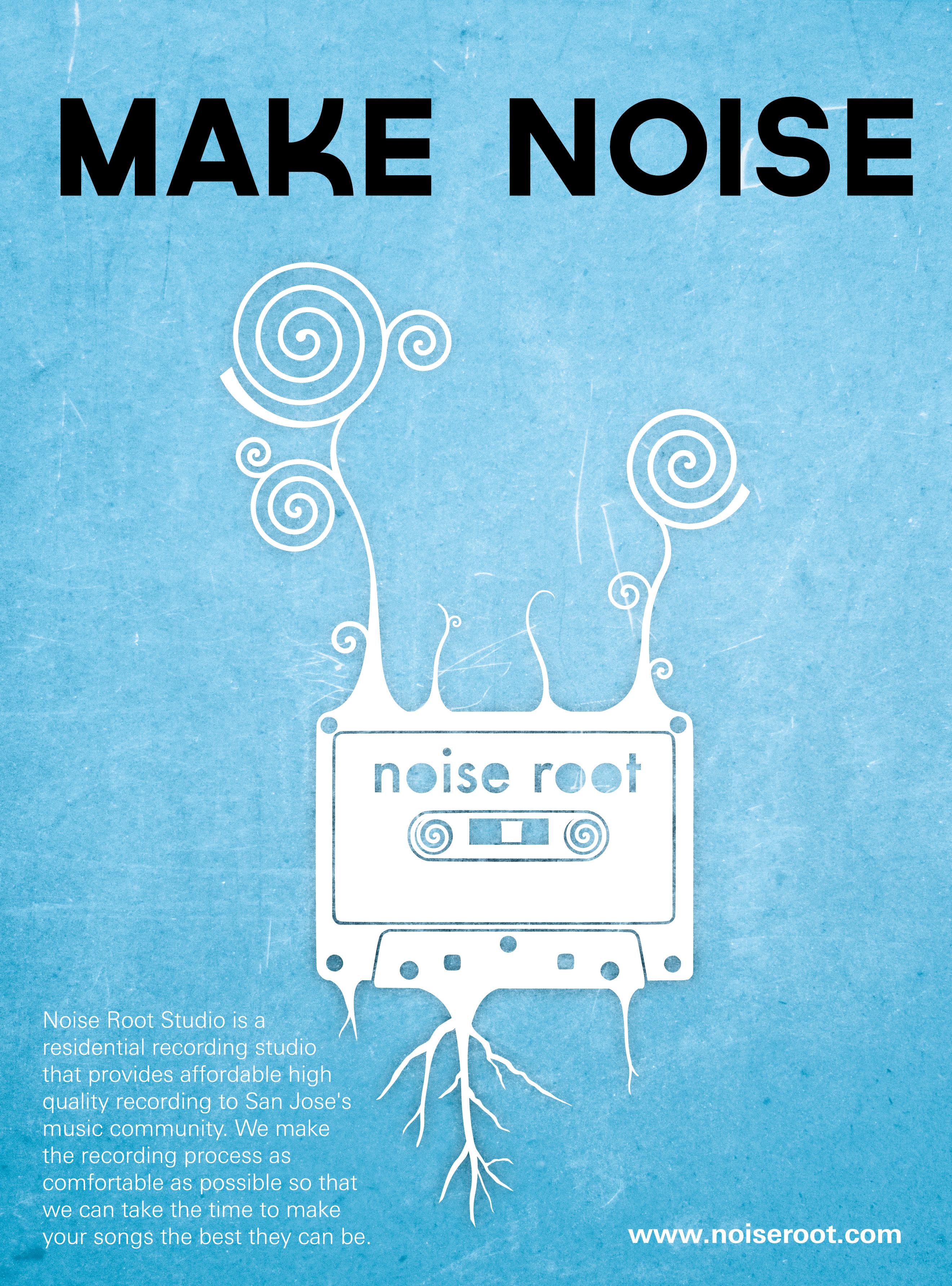
Finding His Own Form
Writer Chad Hall describes his (lack of) writing rituals.

The sunlight filtering through the roll-up door at San Pedro Square Market creates a soft glow behind Chad Hall, highlighting the curls of vapors coming from his e-cigarette. Hall quit smoking while writing his recently published book of poetry, Erectile Dysfunction. “Everybody has to have their vices,” he says in between drags. “But you don’t have to have the same ones forever.”
Leitmotifs of heartbreak, struggles with intimacy, and loneliness in Hall’s poetry paint the writer in a vulnerable light. For Hall, that’s the point. “If you’re not showing vulnerability, you’re not a writer,” he says. “The idea of emotions being only feminine is kind of ridiculous.”
Hall wrote Erectile Dysfunction over a few months after a friend encouraged him to publish some of his writing. He sat down to write only when ideas came to him, never forcing a poem. “Sometimes maybe we should hold ourselves back and wait til it comes ripping out of you,” he says about the writing process.
On his influences:
In high school, I read Alan Ginsberg’s Howl There was something I liked about him saying the things [that] he did with freedom from structure and rhythm. As a 15-or 16-year-old boy, it blew my mind. I didn’t know you could do that. To this day, the Beats are the main part of what I love. That’s the heart of it—Kerouac is huge to me.
I read a lot, I wish I could read more though. I love Christopher Hitchens, Hunter S. Thompson, and Joan Didion is brilliant. I love reading about people—Charlie Chaplin, Malcolm Gladwell. Anybody that’s a little bit of an asshole, I like reading about. They’re giving themselves the power to say something.
On the writing process:
I spent a lot of years trying to write purely. What I ended up doing was just writing shit. Editing, that’s where the writing really is. When I was doing this book, I struggled with that, too. I hadn’t written poetry in so long and some of these pieces were just coming out in whole chunks.
I assume that’s why people have writing regimens, to keep their tools sharp. But I’ve always found that it waters me down. I’m left with all these little pieces [of writing]. For the most part, the bulk of my work has to be written in succession. When the urge is there, I keep writing until it’s done.
On sharing his stories:
It’s not completely therapy, but writing is working through ideas in my head; selfdiscovery. This book was about me trying to understand why I do or say specific things, why I have issues with intimacy. In some way, putting those on the table in front of other people forces me to accept them and figure them out. At the same time, I don’t think I can say as many messed-up things about other people as I can about myself.
Buy a copy of Erectile Dysfunction by Chad Hall at orchardcitybooksandnoise.com
Twitter: @therealchadhall Instagram: @chadahall therealchadhall.com
Written by Flora Moreno de Thompson Photography by max THompson
writing
62
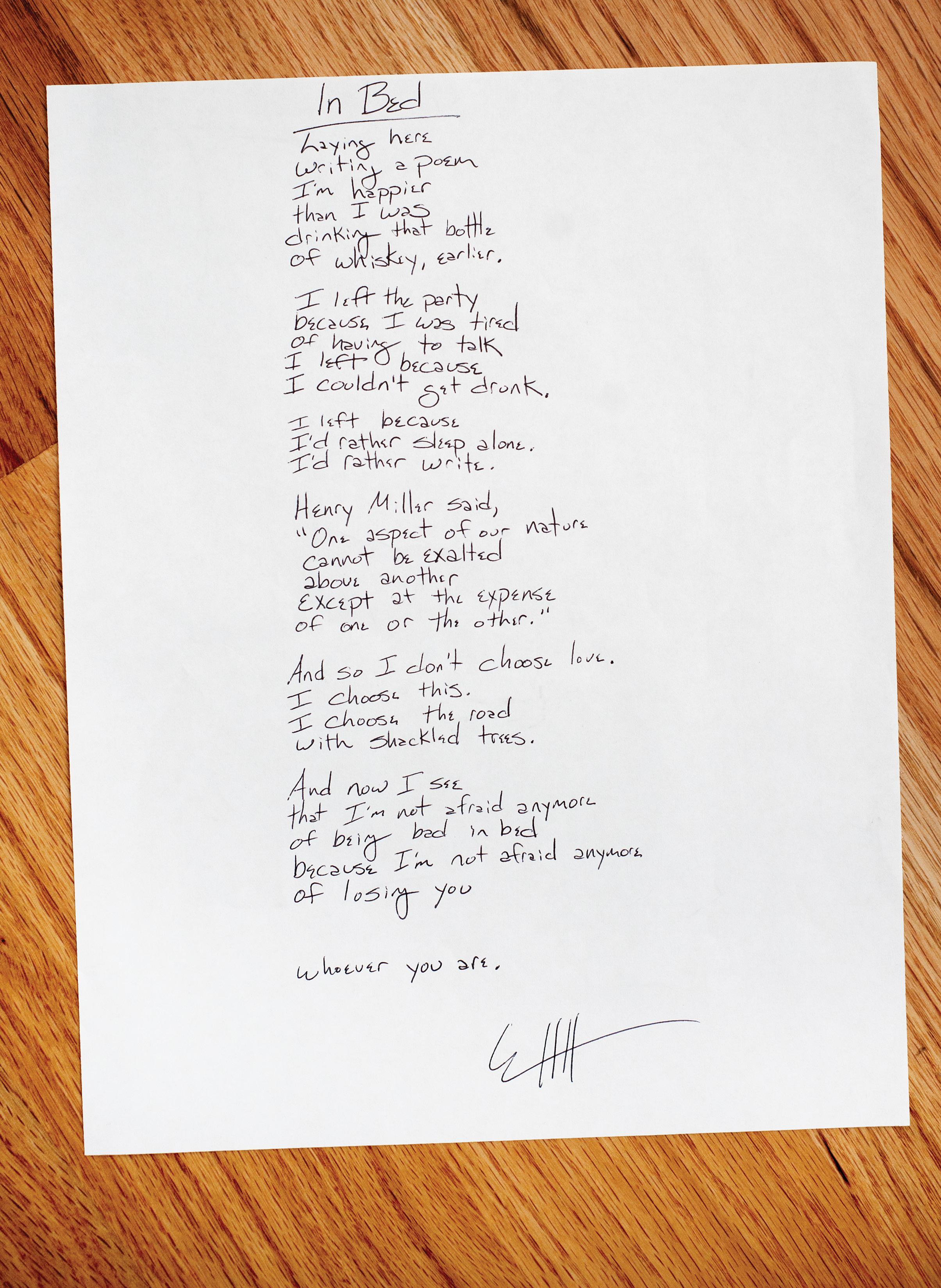
FROM PAST TO PRESENT
John Nguyen turned his love of quality, craftsmanship, and vintage goods into a San Jose business.

The cultural landscape of San Jose is like a kaleidoscope, ever-changing. John Nguyen is a product of that dynamism, coming from a background where he cut his teeth on many different subcultures. Today, he is a sponsored fixed gear freestyle rider, collector of air-cooled VW’s, and the de facto builder for San Jose’s creative community.
“The community has been the driving force to life in San Jose and I am sure to try and be a part of it.”
The reason for my love of vintage and antique things comes from knowing that there’s history behind them. Garments and furniture were made with better quality and craftsmanship. Don’t get me wrong, I still purchase new clothes. I just keep it minimal. Now, I enjoy everything vintage, and I enjoy mixing the vintage look with a twist of modern.
I like antique items, but not just because they’re vintage. I’m not trying to follow trends, because I don’t really think about it like that. I set my life around them. I appreciate craftsmanship. It makes me feel better that other people appreciate it as well.
Ever since high school and college, I’ve always told myself that I will own my business. Today, I am living that dream.
My last actual career of eight years was as a set up machinist. It was fun and I enjoyed it. But when I thought I needed a change in life, I went back to school and attended Academy of Art University in San Francisco. I cut my hours at work to accommodate the commute time. Since I was the only one at the shop that wasn’t full time, I got laid off.
After I got laid off I wasn’t sure of what I should do with myself. I gave myself two options: either apply for jobs around the Bay Area and work for a big corporation again, or come up with something I’m passionate about and go for it. My choice was to not work under someone’s rules, but to create my own instead.
 What drove you to open Oak Creek Vintage?
What interests you about vintage stuff?
Written by geoffrey nguyen
What drove you to open Oak Creek Vintage?
What interests you about vintage stuff?
Written by geoffrey nguyen
64 profile
Photography by chris lovos

What is your personal goal with Oak Creek Vintage?
My main objective with Oak Creek Vintage is to open people’s minds to buying vintage or recycled vintage and antique items. I have been told by many people around me that they like the store and the atmosphere that we try and project to our customers. But I have always been asked why OCV isn’t in SF. My answer is always “Why would I want to go to SF and compete with an already existing market?”
I would like to bring the youthful take on vintage clothes and appealing antique goods to San Jose. I’m from Sunnyvale, but have always been in San Jose. It seems to be a city that’s growing and people are becoming more and more diverse.
Oak Creek Vintage is a passion that I have that I’m hoping will be a stepping stone to venture off into other things involved in the vintage field. Currently I am working on a subdivision of Oak Creek Vintage that will be dealing with designing and building reclaimed furniture and store fixtures.
“Ever since high school and college, I’ve always told myself that I will own my business. Today, I am living that dream.”

What are your other interests?
I was really big into fixed gear freestyle and fixed gear riding. I rode for four years and I guess since I was sponsored, they consider that pro. I wasn’t the best or anything, but I did have sponsorships from Specialized Bikes, iMiNUSD, Breezy Excursion, Foreclosed, and Star Nectar, a local juice company.
I’m active in the vintage Volkswagen scene. Currently I have four: three bugs and a bus.
What do you think is the most important lesson you’ve learned since starting OCV:
The most important thing is to stick to what you believe in. I know it’s really cliche and everyone always says it, but it’s true. Through this process, and we’ve been here just about a year, we’ve had some really low lows; no customers, no sales. Now we’re getting a lot of opportunities and customers are coming in more and people are hearing about us.
You know, even my mom at one point told me that if I wasn’t making any money, I should just pack up and take everything home. She told me to just sell it all online. I know she didn’t say it to put me down, she’s just my mom. If I had listened to her, I would just be working for a big corporation.
You’re a part of the Cannery Park scene. How do you think this area has helped shape everyone that’s a part of it?
Everyone has a different outlook on business, how they run things, or what they do. We’re all close enough to share input and ideas. No one is hungry enough to the point where they say “You’re a clothing company, I’m a clothing company, I’m not gonna help you out or give you my words of wisdom.” We all became pretty tight in that aspect. Cannery Park is a tight-knit group. At first, everyone was suggesting I move to San Francisco, but they’ve grown to appreciate what we’re doing here. Oak Creek Vintage
401 E. Taylor St. Ste. 155 San
95112 408.475.0254 Instagram: @svpxjohn2 oakcreekvintage@gmail.com oakcreekvintage.com
Jose, CA
65

profile
Written by Robert F. James
by gregory cortez
Matt Hamlet’s artistry in ink will make you rethink tattoos as an art form.
Matthew Hamlet is an artist, though most people may not recognize the name. After eight years of bringing abstract ideas to life in vibrant color, he’s managed to carve out a healthy reputation for himself. Despite limited exposure, he has a global clientele who commission his work. Art aficionados seek him out because of his ability to take a singular idea or concept and translate it into something larger and layered with meaning.
While it’s common to find his work displayed in local galleries, such as his recent “Skull Series,” the most likely location to see his craft is walking down the street.
Working out of Humble Beginnings Tattoo Studio in San Jose, Hamlet is a far cry from the scratchers and back-room tattooists of a few decades ago. In fact, finding him tattooing anything other than a custom piece for a customer willing to spend scores of hours over several appointments is rare. And that approach is not the norm.
As ubiquitous as tattoos have become, occasionally the work is still stigmatized. “Bikers and whores,” says Hamlet. “That’s the old cliché. Tattooed people hang out with the wrong crowd. But I tattoo engineers, teachers, you name it.”
“BIKERS AND WHORES. THAT’S THE OLD CLICHÉ. BUT I TATTOO ENGINEERS, TEACHERS, YOU NAME IT.”
Go back just a few years to find the tattoo parlors and those working in them making a living from the single-sitting tattoo. A customer would walk in, pick a piece of flash, put down the shop minimum and then leave in an hour or two with a new work. Part of the tattoo stigma arises from this lack of creativity. Those one-off tattoos—a dagger through a rose or the logo of the local sports team—were the bread and butter for the shop’s bottom line.
Hamlet’s process is a drastic departure from the single-sitting shops. It starts with his clientele.
“Most of my clients are older, more educated. They have a background in art, or at least an admiration of it. And I’m thankful that I get clients smart enough to research what they’re going to do with their canvas before they start.”
“There are a few different reasons people get tattooed,” he says. “Some people use it as armor, as a way of keeping out the outside world. Then there are the people who get tattoos to be accepted within a culture. Other people get tattooed to mark a turning point in life. I get a lot of people getting tattooed for spiritual reasons. They get tattooed as a marking of a change.”
That trust with such important milestones has been earned through years of honing a craft at a level few achieve. Each tattoo inspires the next, with the work constantly improving, and the limits of the medium being pushed. The expectations and ambitious ideas of Hamlet’s customers prevent any sort of complacency.
The more challenging the idea, the more artistic he becomes. Part of that creativity is owed to his background in architecture, a “safe” career respectable to the outside world. “It was prestigious, but still creative,” he says, “And it was something that my family would be okay with. It was an acceptable career. But I never got excited when I got up in the morning to
go work on a project. Architecture is a field where the creativity is just killed by the finances. Your work gets whittled down to nothing.”
Constructing a tattoo with Hamlet is almost an architectural process, starting with a strong foundation sketch, then progressing through color studies, detailed mock-ups, and culminating in a series of sessions with Hamlet to bring the art to life. For a first-time client, it can be intimidating. It means surrendering control over something permanent. And it requires a willingness to wear an unfinished work for weeks or months as the piece develops. Often the work doesn’t look remotely like what the client wanted until the very end. “I’m pretty blessed to have clients who explain my process to others. They say, ‘The best thing to do with Matt is to go with a general idea of what you want, then allow his brain to work it out and add to that concept.’”
Someone sporting tattoos is choosing to permanently express a core component of his or her personality. “When I talk to clients,” he says, “I ask them not so much what the tattoo means or its background. Rather, I ask, ‘What do you want to get out of it?’ I want to discover what it is that is ‘you’ in the tattoo.”
The hardest step of the tattooing process often is walking through the door. Says Hamlet, “When people come to me, they realize that my approach is different,” he says. “I want to do my absolute best job to give you something that will form to your body like you were born with it.”
Humble Beginnings Tattoo 1421 San Carlos Street San Jose, CA 95126
Facebook: matthew.a.hamlet matthewhamlet.com
hamlet@matthewhamlet.com
Photography
67
A Stroll Through Chris Esparza’s San Jose
Written by brandon roos Photography by daniel garcia
From his 90s exploits at Ajax to the more recent Naglee Park Garage, Chris Esparza’s impact on downtown San Jose has come in many phases. He looks to take his next step with Blackbird Tavern.
Long-time downtown ambassador Chris Esparza remains one of the most connected people in San Jose. He’s built his Rolodex organically after having a hand in several local ventures past and present, among them Ajax, Naglee Park Garage, Giant Creative, Fuel, and soon-to-open Blackbird Tavern.
Though a local, Esparza was never able to call one particular neighborhood home growing up. Attending five different schools over seven years, including a two-year stint up in Auburn, California, the frequent moves never allowed him to settle in. “It was five years of never knowing where my class was, of being new and uncomfortable,” Esparza recalls. “In a lot of ways, that probably led me to producing events and hosting people.”
After graduating from Gunderson High in 1985, Esparza spent time at both West Valley and De Anza College, though he admits he had no direction at the time. A year later, he got a job working at Santa Clara club One Step Beyond. It proved to be the job that changed his life.
“It was my first exposure to the young twenty- and thirtysomething alternative life—the goths, the skinheads, the mods, the punk rockers, the death rockers, and everything in between,” he remembers. He saw the club present everything from metal to English soul and rockabilly, witnessing sets from The Red Hot Chili Peppers, the Ramones, Megadeth, and Fishbone. The work inspired him to move to San Francisco, where he worked for two years.
However, when his mother passed away, he felt a need to get away. “I took the opportunity to be somewhere else at Christmas time,” he says. Buying a one-way ticket to Europe, he traveled through Spain, Belgium, and Scotland, picking up work wherever he could. Upon his return, he decided he wanted his own club.
In 1991, Esparza and business partner Chris Elliman opened Ajax. During its mythical four-year run, the venue hosted the likes of The Fugees, The Roots, and Ben Harper, establishing itself as a destination for forward-thinking cool. It attracted all pockets of the downtown scene during San Jose’s “Four Corners,” 90s nightlife heyday. Esparza admits he was the social creature of the group. “In a way, I was a natural doorman,” he says. “I liked greeting people, getting them excited about what we were doing and telling them when to come back.”
Looking back, Esparza sees his Ajax period as a time when he and Elliman could seemingly do no wrong. Arriving at a time when the area was just starting to become Silicon Valley, the low cost of living fostered plenty of nightlife. Ajax was championed by local creatives. “I think they trusted us to curate night after night,” he says. “We said ‘Look, I know you’ve never heard of Ben Harper, and no one else has either, but we heard this guy’s cassette tape and I’m telling you, don’t miss this.’ And they would show up.”
Sadly, the club’s four-year run came to a close after negotiations with the space’s owners fell through. Esparza was effectively locked out, with the space maintained by the owners. In nine months, the space was vacant.
Two years after the demise of Ajax, Esparza and a similar cast of partners returned with Fuel, an international café in the current Blank Club space. It showcased a similar vibe, though it wasn’t exclusively a club. “It was for an adult that wanted a beautiful space that wasn’t as easily defined as a café or nightclub or restaurant,” Esparza says. “It was literally all of those things.” Boasting a painted globe on the ceiling, it was conceived from the ground up and seemed primed to tap into the same crowd that made Ajax such a success. Yet, where Ajax could do no wrong, Fuel’s four-year run was mired in constant, needless self-reflection. The message was the same, but somehow, the crowds had dried up.
After coming back to the fold with much more business savvy than he had at Ajax, Esparza struggled to understand why Fuel was failing. “It was a business learning experience,” he says. “You can be good and you can be the smartest guy on the block, but if you don’t have a little bit of luck and timing on your side, it doesn’t matter who you are.”
In retrospect, Esparza ties in the trouble with the economy. In conjunction with the tech boom, rent skyrocketed, stealing spending money from the venue’s target audience of local creatives. At the same time, the steady rise of illegal downloading significantly changed how artists toured. Suddenly, a $300 show became a $3,000 show, and Fuel couldn’t keep up with the discrepancies. It closed its doors in 2001, an unsung gem that was never able to find its niche like Ajax so easily had.
During his days at Fuel, Esparza began to be approached by organizations to serve as a creative consultant, leading to the creation of Giant Creative. Going twelve years strong, Giant is now responsible for KraftBrew, Winter Wonderland, and the Great Glass Pumpkin Patch in Palo Alto. The outlet became a necessity when Fuel was struggling. It’s since become his main gig, allowing him to help anyone from small businesses to the city of San Jose.
In the restaurant realm, Naglee Park Garage has been Esparza’s latest success. He lovingly calls the 30-seat bistro “the tiniest restaurant on the face of the Earth.” Despite its limitations, he, business partner Brendan Rawson, and head chef Louis Silva have made it a signature downtown eatery.
After the space, a former service station, suffered a series of failed business ventures, its owners decided to wait until the right offer came around. They were envisioning an Americana-themed restaurant with a great selection of beer and wine. As luck would
68
profile
have it, that was exactly what Esparza, Rawson, and Silva were looking to pitch. Luck returned years later when Guy Fieri’s Food Network show “Diners, Drive Ins and Dives” called. Their segment led to national exposure, and repeat showings now result in a spike of emails requesting the location’s fabled ketchup recipe.
Still, Esparza sometimes has trouble making sense of their subsequent success. The show didn’t change their formula; it only got the word out. As he maintains, “We were great before ‘Diners, Drive-Ins and Dives.’ Why does it take national television to tell you to go eat there when you live in this town and there aren’t many choices?”
Yet even with his string of successes, his best conception may have yet to officially begin. Esparza and Rawson are ready to bring their savvy to downtown’s epicenter with Blackbird Tavern, a restaurant and café located along Paseo de San Antonio that looks to appeal to out-of-town business folk and locals alike. Much like Ajax and Fuel, he wants the venue to offer great food, music, and conversation for patrons.
Patio seating is set to spill out onto the Paseo. Plans are in place to serve wine from vineyards in the Santa Cruz mountains, and their bar will offer a well-curated selection of craft brews and California spirits. Esparza even hopes to pair food with music. For him, the
“YOU CAN BE GOOD AND YOU CAN BE THE SMARTEST GUY ON THE BLOCK, BUT IF YOU DON’T HAVE A LITTLE BIT OF LUCK AND TIMING ON YOUR SIDE, IT DOESN’T MATTER WHO YOU ARE.”

value in the idea goes both ways—patrons get an all-encompassing dining experience and those behind the scenes remain on their creative toes.
Some speak of the Blackbird space as cursed, the speculation stemming from a string of franchise failures over the past decade. To counter the talk, Esparza offers a history lesson, noting that a taqueria lasted in the space for twenty years, making it through massive downtown light rail development before those three failed. He attributes the failures to bad business strategies. “I know why they closed and I know what they did wrong,” he says. “I won’t make those mistakes.”
A lot has changed since those first days of working at One Step Beyond in the mid 80s, when he discovered a wealth of alternative culture. He’s learned plenty in the process, but what rings loudest for him remains the people he’s helped bring together. As a teen who constantly struggled to find his place, Esparza finds comfort in the fact that he’s been able to create spaces where others could find theirs.
chris@giantcreative.com Nagleeparkgarage.com giantcreative.com blackbirdtavern.com
Mezcal
Settled in the heart of downtown, this restaurant takes you way south of the border where Mexican food moves into the extraordinary delights of Oaxaca.
Written by: Kat Bell
food
Photography by: Daniel Garcia

“Here it is not just family-owned, it is family-operated, right down to Adolfo Gomez himself greeting you at the door.”
Walk into 25 West San Fernando St. and the man seating you may be Adolfo Gomez, owner and manager of Mezcal. This is not your ordinary Mexican restaurant, it is a culinary treat straight from Oaxaca, Mexico. “If you look around San Jose,” Gomez says, “you will see a lot of Mexican restaurants and little taquerias, but they are mostly serving northern Mexican cuisine. Here, we do not have burritos on the menu.”
What they do have are rich moles made with fragrant spices, guacamole sliced, diced, and served table side, and of course chapulines, crispy grasshoppers sautéed with garlic, lime and salt. Not your ordinary menu, but that’s just the way Gomez likes it. “People come in and they ask, ‘Do you have chimichangas?’ No. ‘Do you have burritos?’ No,” he says with a laugh. “They ask me what’s good here, and I tell them ‘everything.’”
When it’s your mother and brother in the kitchen cooking up recipes passed down over generations, the assessment rings true. Gomez knows these dishes because they are the same as when he was a child. “I ask people to think of all the meals their mothers made over the years. Can they pick only five favorites?” he asks. “We started with 125 of my mother’s recipes—foods I ate growing up as a boy. We chose 25 dishes.”
Oaxacan cuisine is known for its freshness and quality ingredients. The moles are slow-cooked, and everything is made from scratch. Gomez’s brother Octavio is chef, but his mother, Doña Libo, is Mezcal’s heart. It is her recipes, perfected over generations, that give the restaurant its spirit and spice. Mezcal it is not just family-owned, it is family-operated, right down to Gomez himself greeting you at the door.
“I tell my staff that service is number one, because you can have the best food in the world, but if the service is not perfect, no one will come back,” Gomez says.
The atmosphere also plays a large role in what takes this restaurant into the extraordinary. Throughout the space there are pieces from famous Oaxacan artisans. The warm, brick walls and lighting glow with rich color. Traditional Alebrije figurines, brightly-painted carved wooden animals, nest in alcoves. Tin lanterns hang from the ceiling, revealing images from Frida Kahlo’s “Las Dos Fridas” and katrinas with their skeleton grins hanging from the walls. It is this attention to detail that perfects Gomez’s creation. Gomez recalls that, after five years of hard work, Mezcal was set to open—and then the 2008 recession hit. Having chosen a location to catch crowds flocking to the Convention Center, the brothers thought Mezcal was doomed to shutter its doors before they even opened.
“We were lucky,” he says. “Family and friends came through. They helped with loans. We didn’t want to wonder what could have happened.”
In 2008, Mezcal opened. Metro Newspaper named it Best New Restaurant in 2009. After four years, it is still going strong. While other establishments change hands and close doors, Mezcal is filling chairs and serving up quality cuisine in a stylish atmosphere.
Gomez’ secret to running his restaurant is simple. “To succeed in service, you have to love what you do,” he says. “And we love it.”
“You can have the best food in the world, but if the service is not perfect, no one will come back.”
Mezcal 25 W San Fernando St. San Jose, CA 95113 408.283.9595 mezcalrestaurantsj.com
Poor House Bistro
What was once a dapper old Victorian now houses some of the fiercest artists and hottest Cajun spices.
Written
by Kat Bell
food
Photography by Daniel Garcia
“It’s
all about the music and the food”
Nestled between HP Pavilion and the Diridon Station is a little house of blues that goes by the name of Poor House Bistro. Seven nights a week, you can catch live music, sip a cold brew, and taste the delights of New Orleans cuisine without ever leaving San Jose city limits.
This is Jay Meduri’s house, a blues man himself. His love affair with music led him down a windy road that found him transitioning his family’s home into the restaurant patrons see today—complete with the musicians that grace its stage each night.
“This house was a sorority house off 11th Street that my grandfather bought it in the 40s,” Meduri says. “My grandparents and my parents lived here.” After renting the property out for years, his brother moved in and renovated much of the structure during the 1980s. Jay then took it over in the late 90s and began transforming the old Victorian into a viable business.
“I was very fortunate to have a family home that I was able to do a complete rezoning on,” Meduri says. “It took me five years to build this out. It was a long road and I didn’t really know what I was doing. You’re always throwing money at it. It was tough times. I leveraged everything I had: my house, credit cards, and loans.”
But despite the challenges, Meduri remained tied to his purpose of creating a space not yet seen in San Jose. The venue would be a real down to earth community music space where professionals and amateurs could share their common love of the blues. “For me, creating this place was about the tie with New Orleans. Being a musician and playing blues music inspired me.” Meduri worked for American Airlines for 18 years. “That was my ticket to get to New Orleans every year,” he says. “I was the ground crew...bringing in planes, a blue collar guy. I flew all over the place and traced the roots of the
blues, down the Mississippi and through Memphis.”
Meduri remembers the first time he arrived in New Orleans for Mardi Gras. The live music and the atmosphere combined to give him a taste of something new.
Then, at San Jose Jazz Fest, he really fell in love. “It’s the vibe that got me,” he says. “They had a big food fest, cheese steaks, Togo’s, and Subway—but nothing beats a real Po’ Boy.” It was there he saw a market worth exploring. “I wasn’t trying to be fancy. I just thought of doing a simple Po’ Boy shop with the hits of New Orleans: your jambalaya, red beans and rice, and bread pudding,” he says.
Over time, the idea grew. Menu items were changed to suit the tastes of San Jose and the live music became an interwoven part of the restaurant’s mission. It eventually grew into the establishment it is today.
There have certainly been a few setbacks on Poor House Bistro’s journey to success. The year they opened in 2004, San Jose suffered from a hockey lockout. The restaurant experienced a drastic drop in foot traffic without a hockey season. In 2005, Hurricane Katrina hit New Orleans, all but stopping Meduri’s supplies and rocking a community he loved.
Meduri remembers those times. “It hurt me to see all of my friends hurting. A lot of people had helped me with my recipes and taught me what I know about the cuisine and spirit. But then we regrouped
and began fundraising. We were able to raise $11,000 for Habitat for Humanity’s “Musician’s Village.” Flying down to present the check gave him comfort, knowing he was providing funds to build homes for those displaced by the storm.
Comfort didn’t just go to New Orleans; much of New Orleans came to San Jose. Meduri remembers times when displaced natives would come in to order a piece of home on a plate. “People would come in and tell me how coming here would feel like being home.” he says.
With winter now fading and the Sharks back on the ice, Meduri and his team are looking forward to the busy time the summer months provide. With the warming lamps turned down, it will be the musicians who heat up the stage each night.
“It’s all about the music and the food.” Meduri says. “I like to look out and see a 90 year old grandmother listening to music next to a table with an infant. It’s a space where everyone of all ages can come and see great live music for free. That’s my goal. It makes me proud to have turned my family’s home into a public house.”
Poor House Bistro 91 S Autumn St. San Jose, CA 95110 408.292.5837
poorhousebistro.com
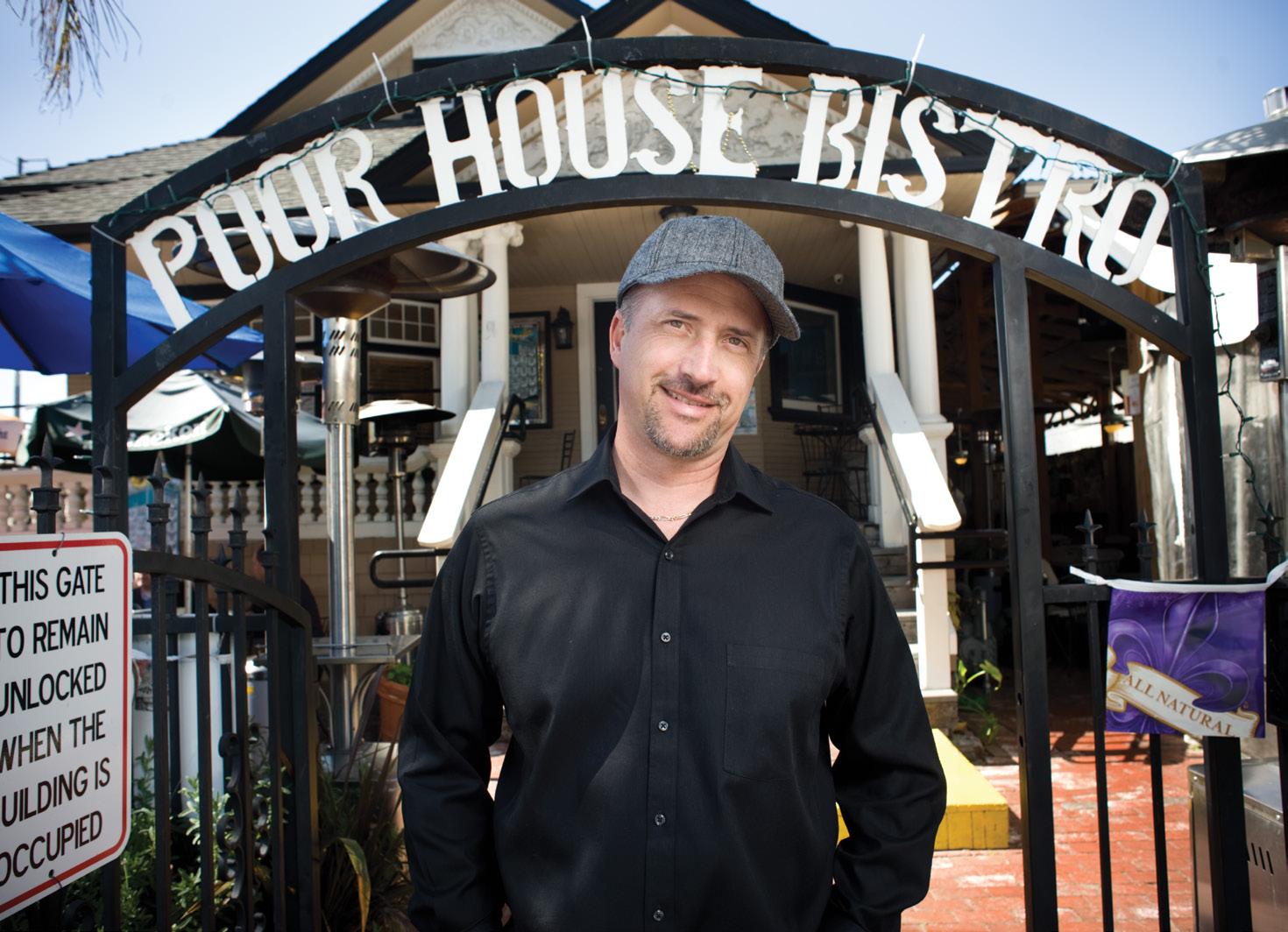
73



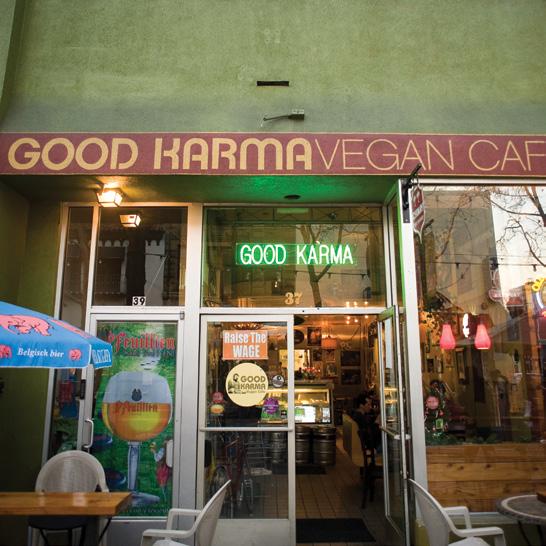


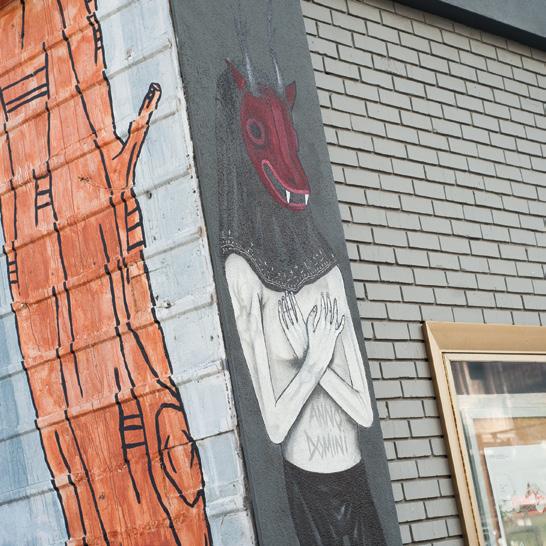
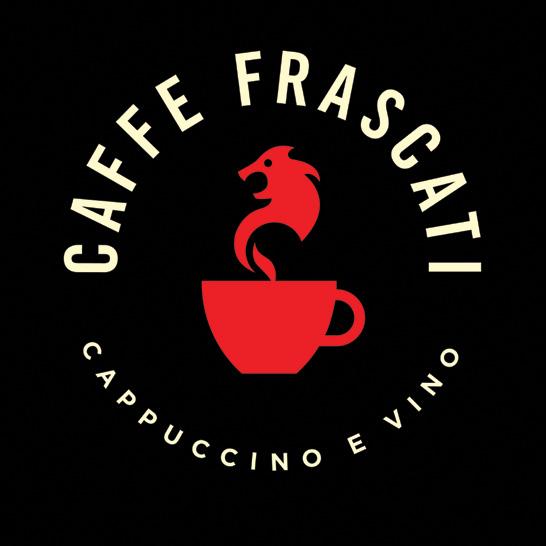
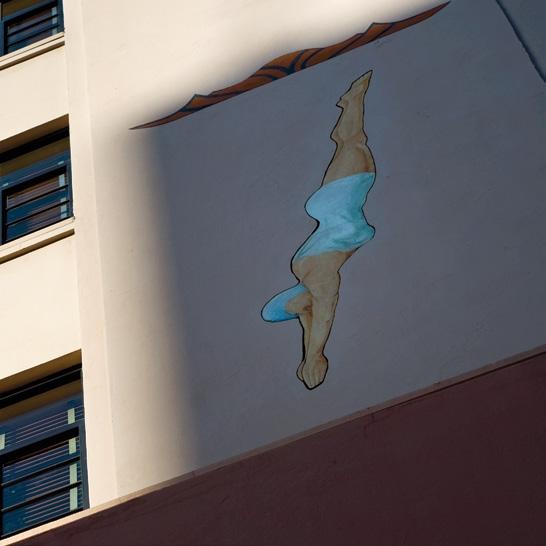



a
F G I J H
B
c D E
Picks by Local Mohammad Gorjestani
74
Picks by Eric Fanali Written by Flora Moreno de Thompson
170 S. Market St. San Jose, CA 95113 liveatthepagoda.com With
Local Eric Fanali
DAY JOB
Educator and social media specialist.
night job
As promoter at Grand Fanali Presents, Fanali brings live and local music to the South Bay.
home town
Originally from Connecticut, Fanali moved to Saratoga in 1988 and has been in the South Bay ever since.
street cred
Fanali has organized over 1,500 music shows in the South Bay since he was 16 years old. “I don’t do it for money. I love helping out the bands,” says Fanali. “It has given me a chance to find out who in San Jose is making great music these days.”
Fanali curates bands for Daydream Nation, a monthly music show at San Pedro Square Market. He also organizes Rockage, an annual three-day music and video game festival held in downtown San Jose, and helps plan the musical lineup for Silicon Valley Sound Experience, a weekend of local music at various San Jose venues.
grandfanali.com twitter: @fanali
A. Anno Domini Gallery
Only one to two music events a month, but the owners, Cherri Lakey and Brian Eder, curate it so well that you can’t miss it.
366 S. First St. San Jose, CA 95113 galleryad.com
B. Art Boutiki
Little by little, Dan Vado has added his own flair to Art Boutiki. This is the new location, and it’s an all-ages venue. He’s created his own little pocket on the San Jose scene.
44 Race St. San Jose, CA 95126 artboutiki.com
C.The Blank Club
They have the best sound system, and a certain look and style to their club. Lots of different subcultures of music.
44 S. Almaden Blvd. San Jose, CA 95113 theblankclub.com
D. Caffe Frascati
Open mic with a lot of variety, from spoken word to opera. It’s a good spot to meet up with people on the other side of downtown.
315 S. First St. San Jose, CA 95113 caffefrascati.com
E. Chromatic Coffee
Cool shows, and open mic. It’s just a great place that’s out of the way from downtown San Jose.
5237 Stevens Creek Blvd. Santa Clara, CA 95051 chromaticcoffee.com
F. Good Karma Vegan Cafe
If you support the DIY shows, go to Good Karma on Thursday nights. I really like the vibe and the food is good, too.
37 S. 1st St. San Jose, CA 95113 goodkarmavegancafe.com
G. Hedley Club Lounge
Frank Sinatra Night once a year. Hedley is the swankiest place in town.
233 W. Santa Clara St. San Jose, CA 95113 hoteldeanza.com
h. Homestead Lanes
People laugh when they hear about a music scene at a bowling alley, but the X Bar is a good all-ages spot that makes it worth leaving downtown.
20990 Homestead Rd. Santa Clara, CA 95014 homesteadlanes.com
i. San Pedro Square Market
SPSM is accessible to almost everyone. It’s like the headquarters for what to do downtown because you can go to so many different places from here. Daydream Nation is held here one Saturday a month.
87 N. San Pedro St. San Jose, CA 95110 sanpedrosquaremarket.com
j. Live at the The Pagoda
Tommy Aguilar brings excellent shows to The Fairmont with a nice variety of music.


75
city
big as San Jose, even the most savvy insiders need a local’s advice every now and then.
a
as
Contributors
The production of Content Magazine would not be possible without the talented writers, editors, graphic artists, and photographers who contribute to each issue. We thank you and are proud to provide a publication to display your work. We are also thankful for the sponsors and readers who have supported this magazine through advertisements and subscriptions.
Want to be a part of the Content community?
Contact us at: editor@content-magazine.com

Kristine is a Bay Area based individual who looks to the world with wonder and excitement. Graphic design is both her life and her passion. Currently a student at San Jose State University, she looks forward to seeing what the creative world has to offer her and what she has to offer it.
kristineyoung /500px.com

Max is an artist based out of California. His evolving style and name continue to gain popularity as he’s rapidly begun to take the greater Bay Area by storm. He’s shot for known musicians, clothing companies, models, as well as captured amazing architecture from San Francisco to Los Angeles. maxthompsonphoto.com


GREGORY CORTEZ
Gregory Cortez is a Bay Area based photographer and filmmaker. He has been shooting interior design and portraiture since 2009. The dramatic use of light and skillful composition characterizes his work. However, Cortez’s careful scrutiny of his subject never prevents the possibility of great spontaneous moments.
gregorycortez.com


Heather is a cultural historian and freelance writer. She is the author of the book Mid-Century by the Bay and numerous articles on American popular culture and historic preservation. A third generation San Francisco Bay Area native, Heather is committed to celebrating the region’s unique history.
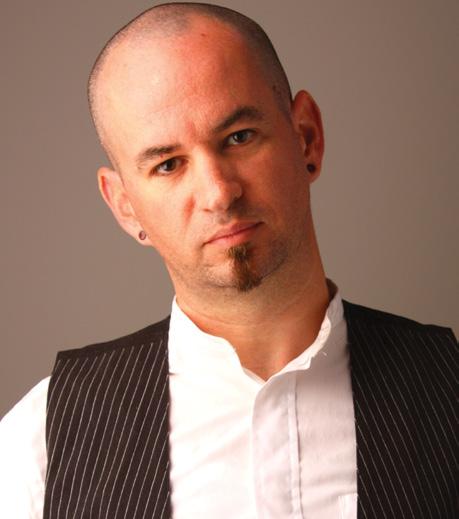
ROBERT F. JAMES
Robert is a former John Steinbeck Fellow of Creative Writing. He lectures in the Department of English and Comparative Literature at San Jose State University, where he received a Master of Fine Arts (Creative Writing). When not writing, he’s either riding his bicycle or raising chickens.

FLORA MORENO DE THOMPSON
Flora is a writer and managing editor for Content Magazine. A proud San Josean, Flora is a San Jose Sharks season ticket holder and San Jose Bike Party regular. She is addicted to coffee and her two dogs, Lord Stanley and Little Joe. In her spare time, she enjoys traveling and writing about herself in the third person.
Brian was born and raised in San Jose California. He is a recent graduate from San Jose State University with a Bachelor of Fine Arts in Graphic Design. Art and music has been a major influence as well as vessel for his creativity. His works and character are both well rounded and diverse as he strives to inspire and motivate people. briangomezdesign.com
KRISTINE YOUNG
HEATHER M. DAVID
BRIAN GOMEZ
MAX THOMPSON
76



CONTENT MAGAZINE support subscribe advertise
editor@content-magazine.com







Content Magazine iPad App Available in Apple App Store $3.99 Single Issue $24.99 Yearly Digital Subscription (Print Subscriptions Include Digital Edition)
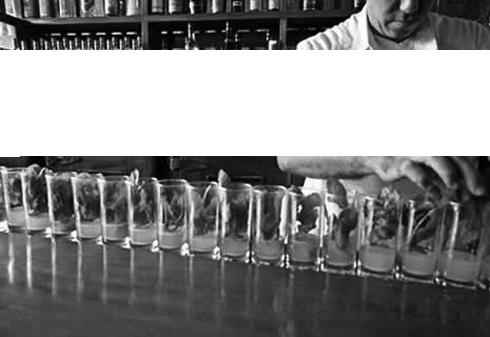

H a ba n a Cuba Cuba FUNDADA EN 1994 RESTAURANT fine dining . special events . catering . to go . deliveries www.998cuba.com * 408.998.CUBa(2822) 238 race street * San jose * CA

C iPad App Available in Apple App Store
CONTENT NEXT ISSUE INVENT 5.2 SAN JOSE 2013 WWW.CONTENT-MAGAZINE.COM
ANNuAl SubSCripTiON priNT & DiGiTAl $42.00 digital only $22.99
facebook.com/contentmag twitter.com/contentmag






























 Written
Written















 Ara Ahadi
Ara Ahadi




 Written by Christy Junkerman and Sieglinde Van Damme
Written by Christy Junkerman and Sieglinde Van Damme














 Jennifer Groft
Jonathan Huang
Gloria Huet
KGM
David Kempken
Meiru Huang
Jennifer Groft
Jonathan Huang
Gloria Huet
KGM
David Kempken
Meiru Huang




















































 What drove you to open Oak Creek Vintage?
What interests you about vintage stuff?
Written by geoffrey nguyen
What drove you to open Oak Creek Vintage?
What interests you about vintage stuff?
Written by geoffrey nguyen










































